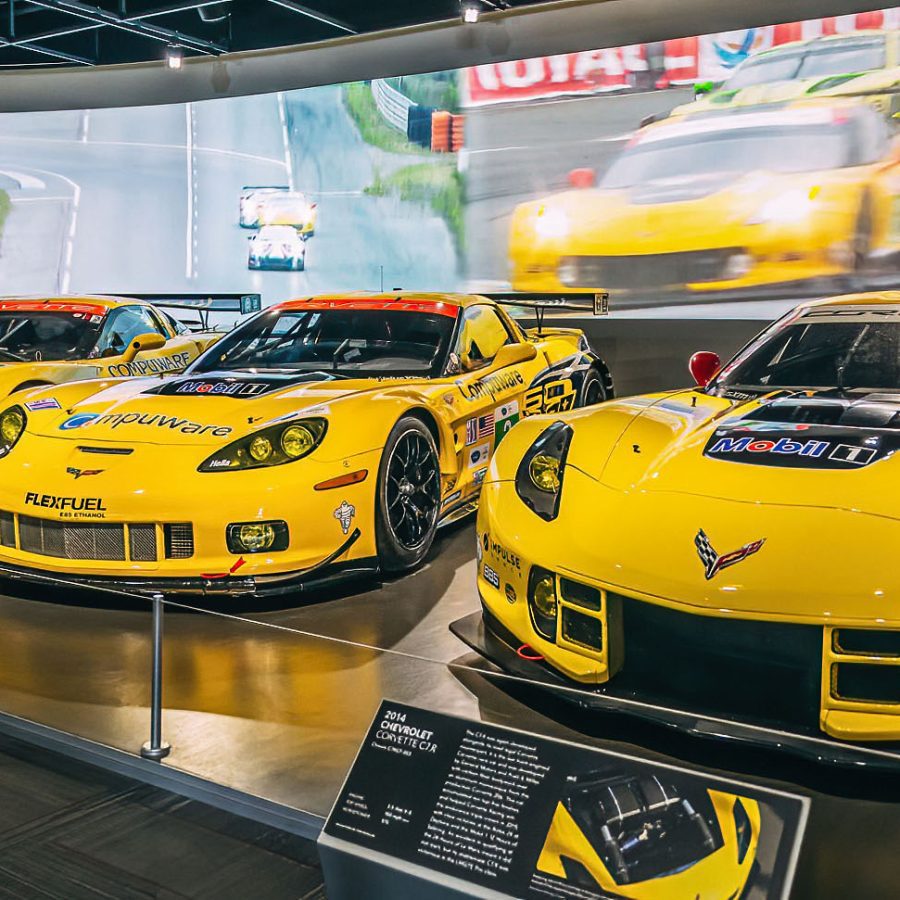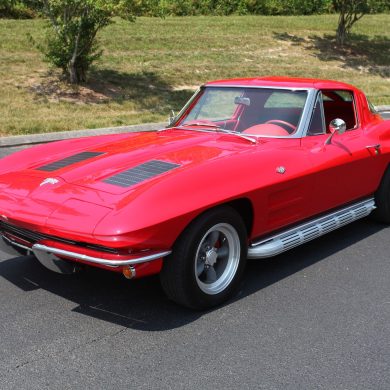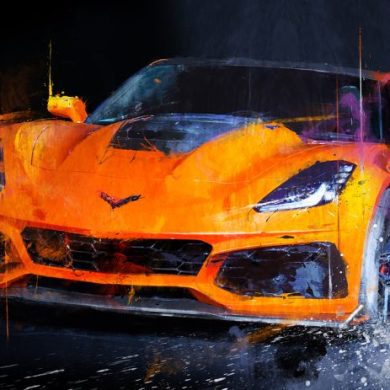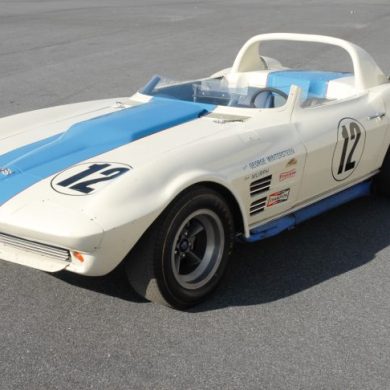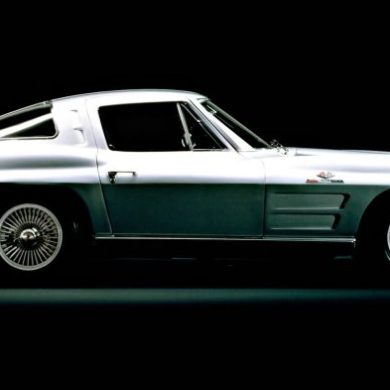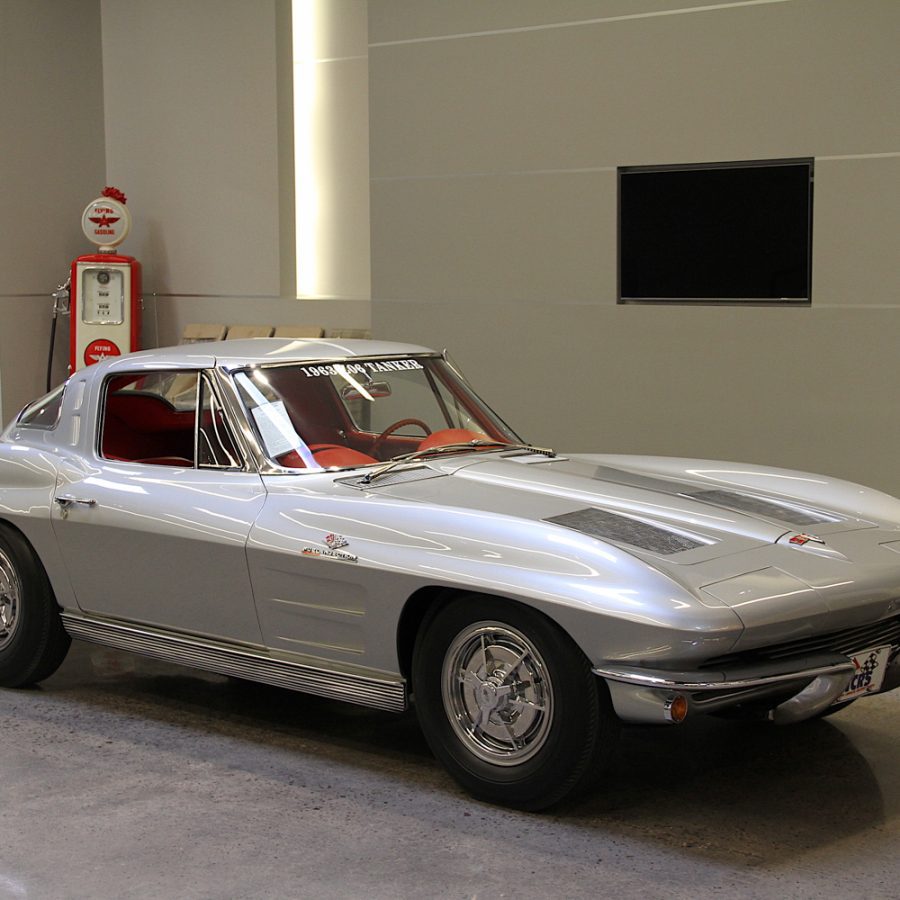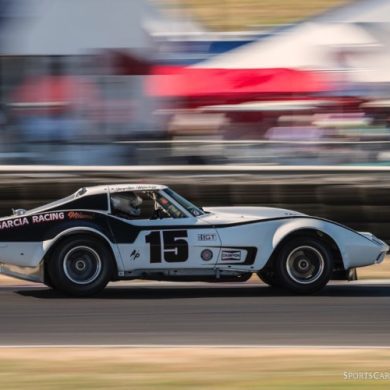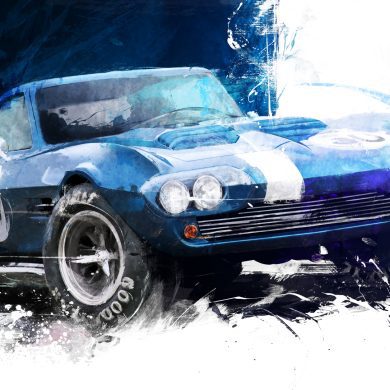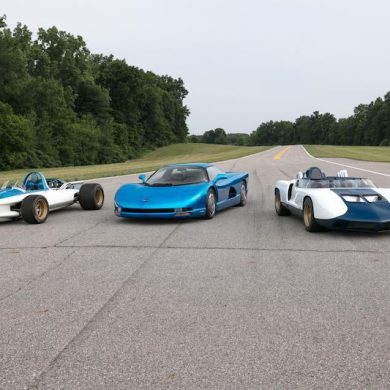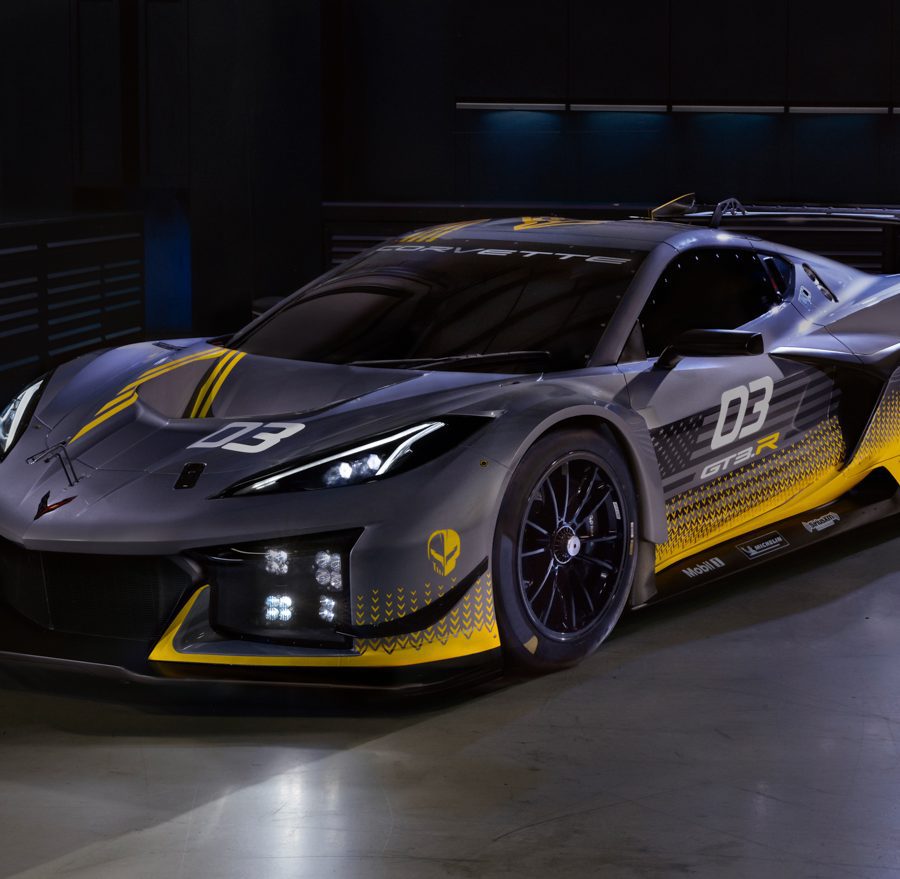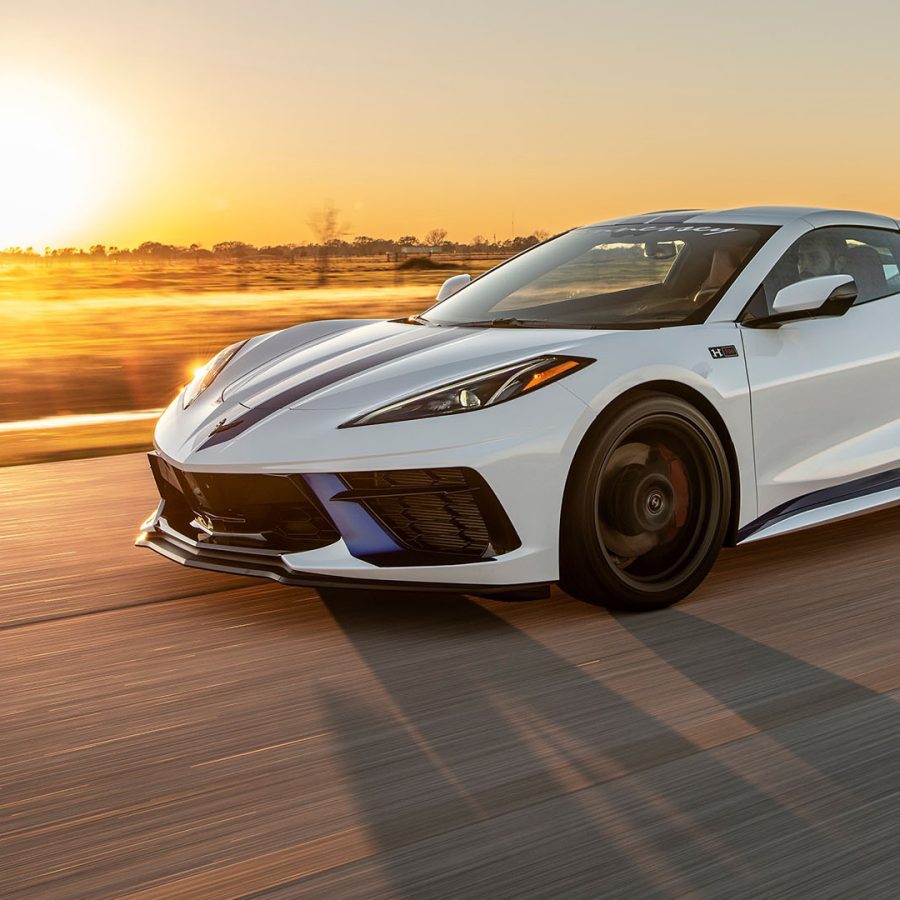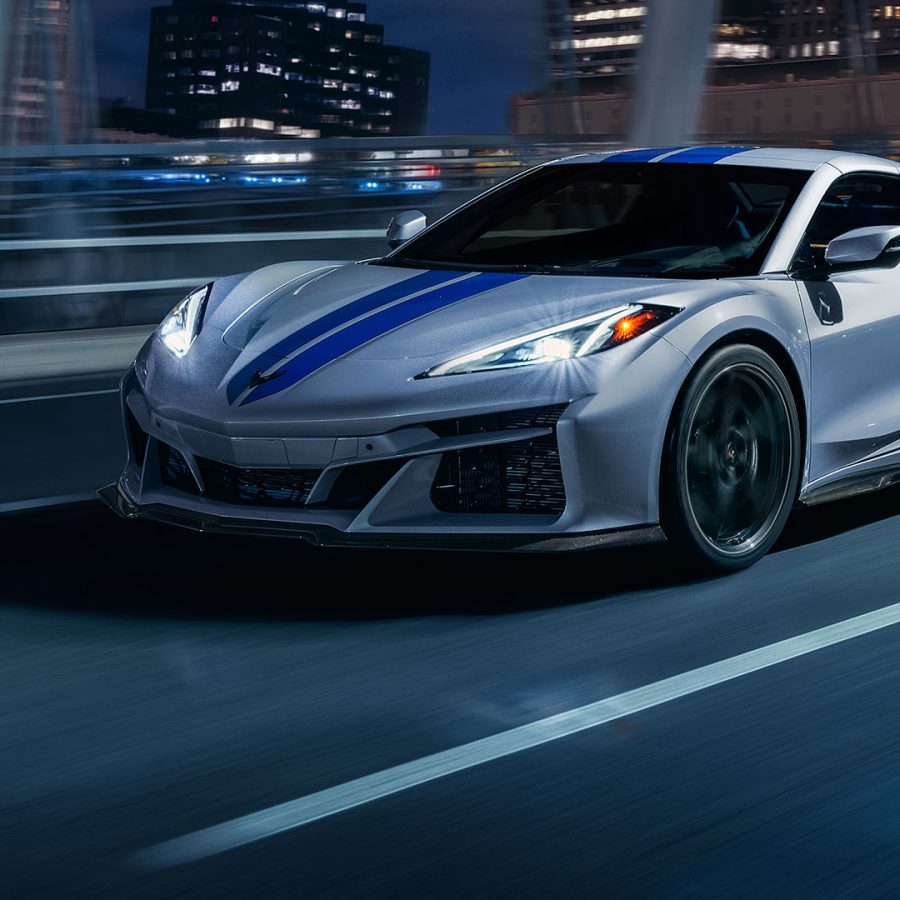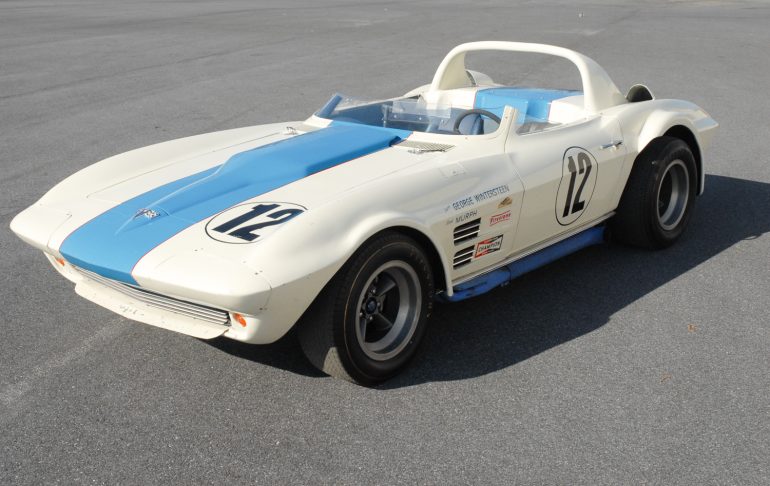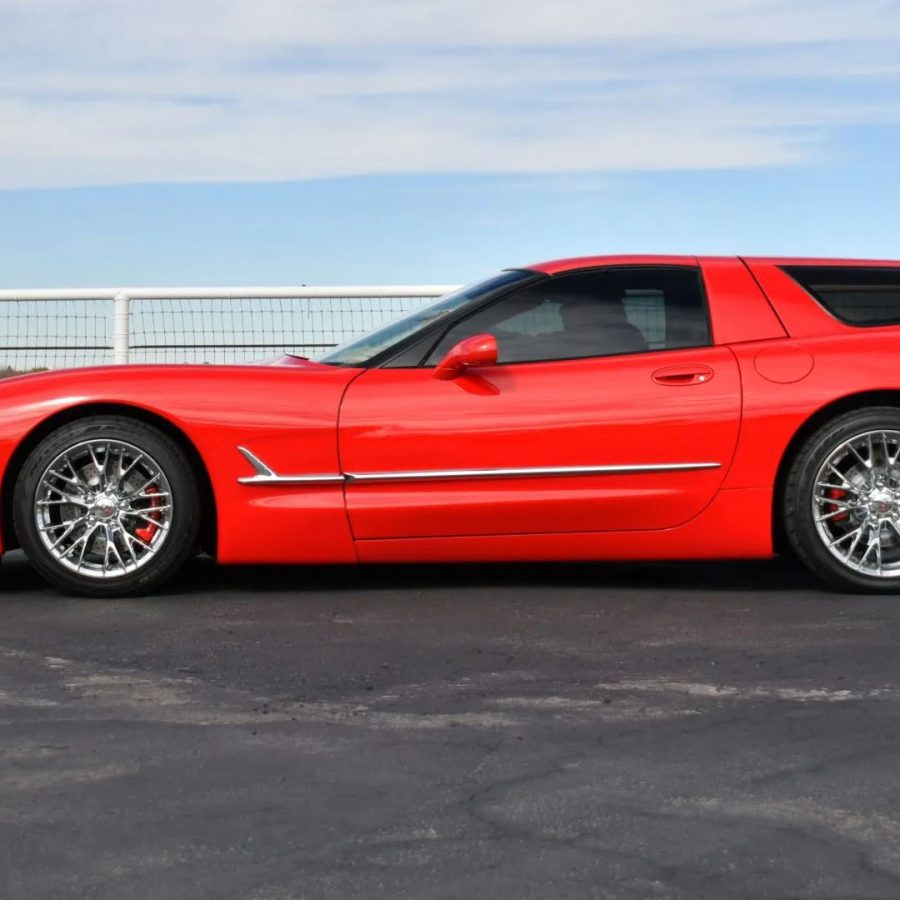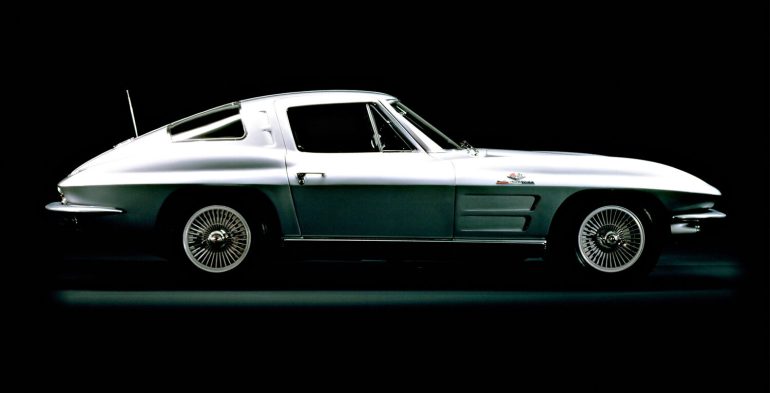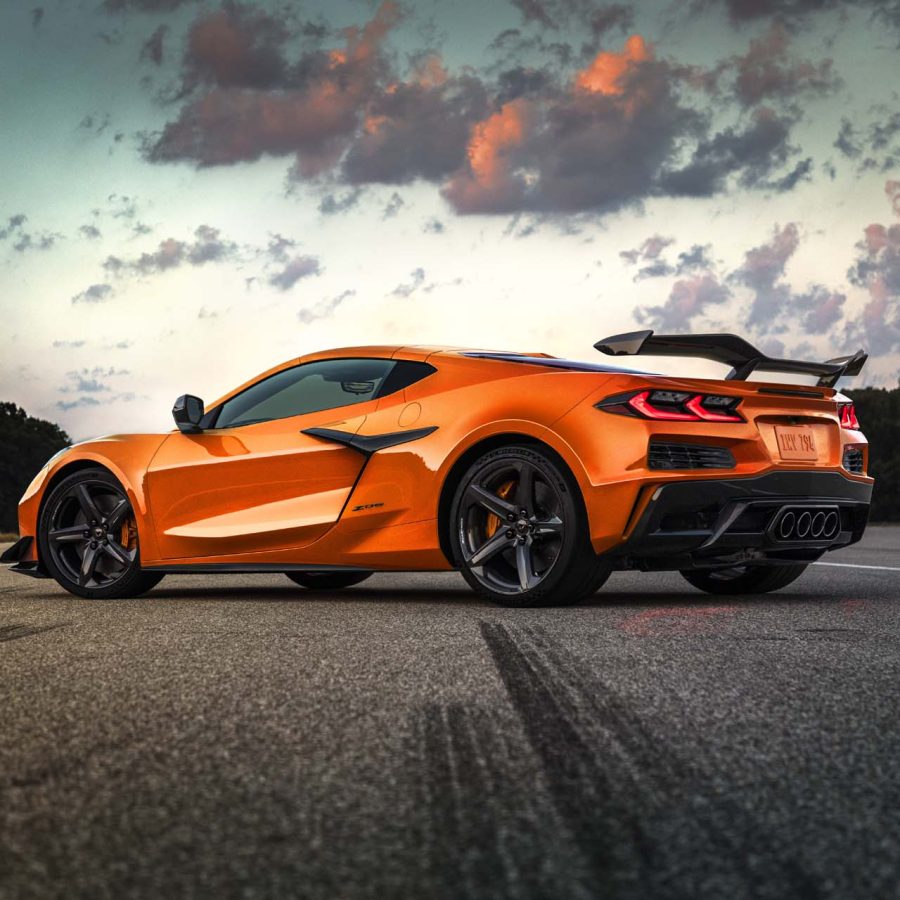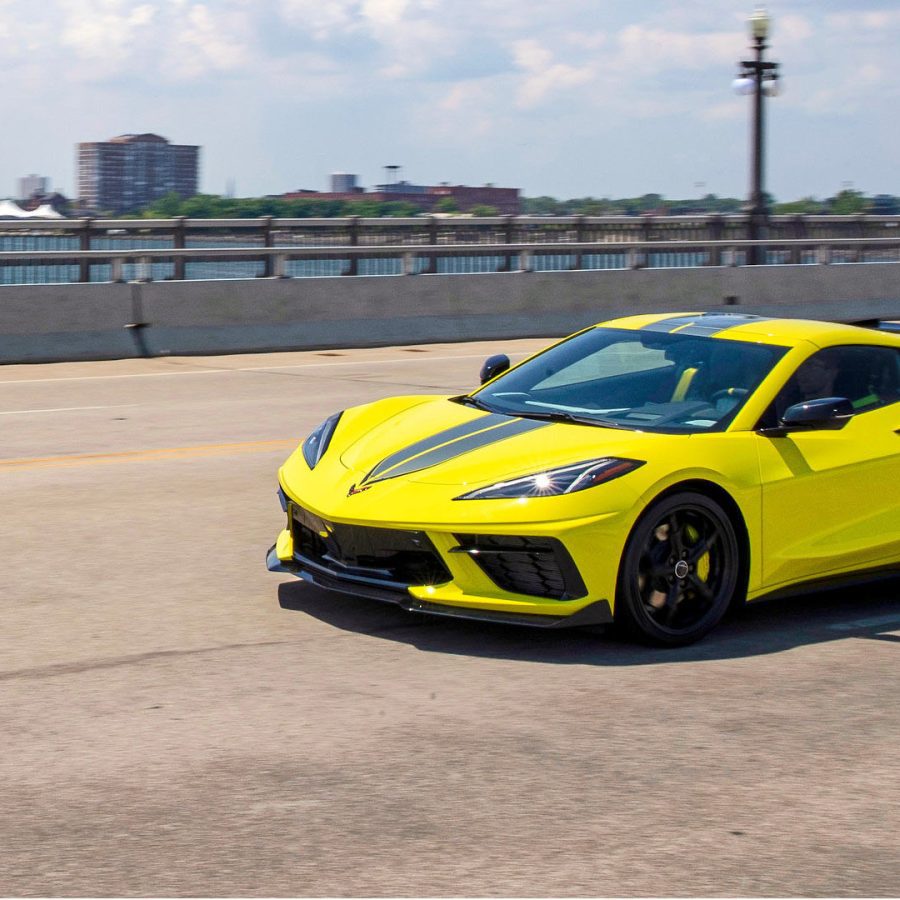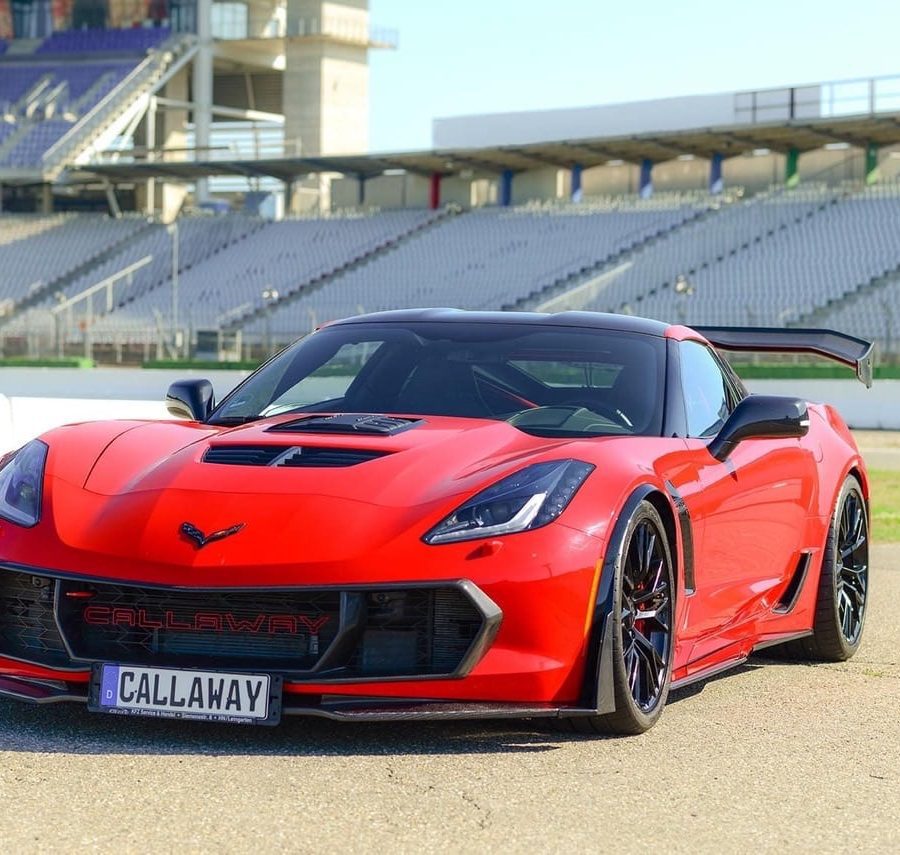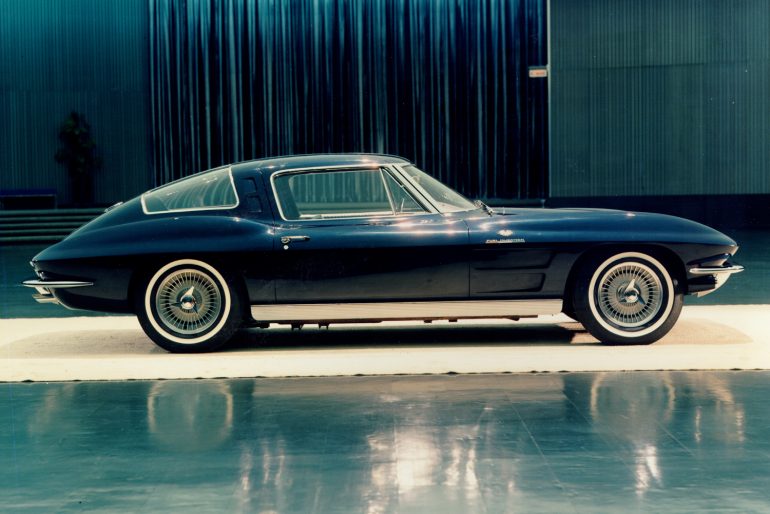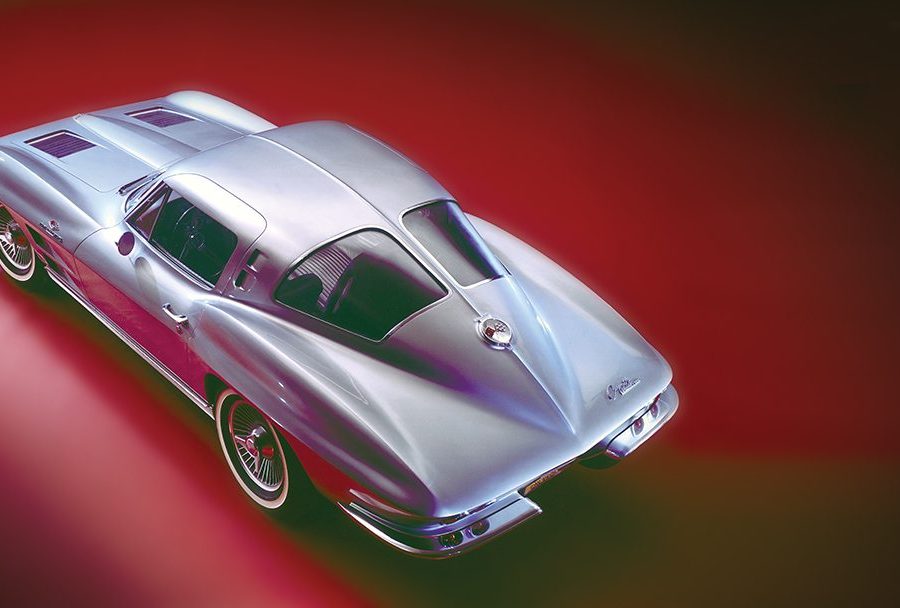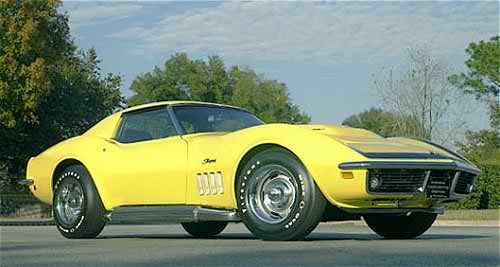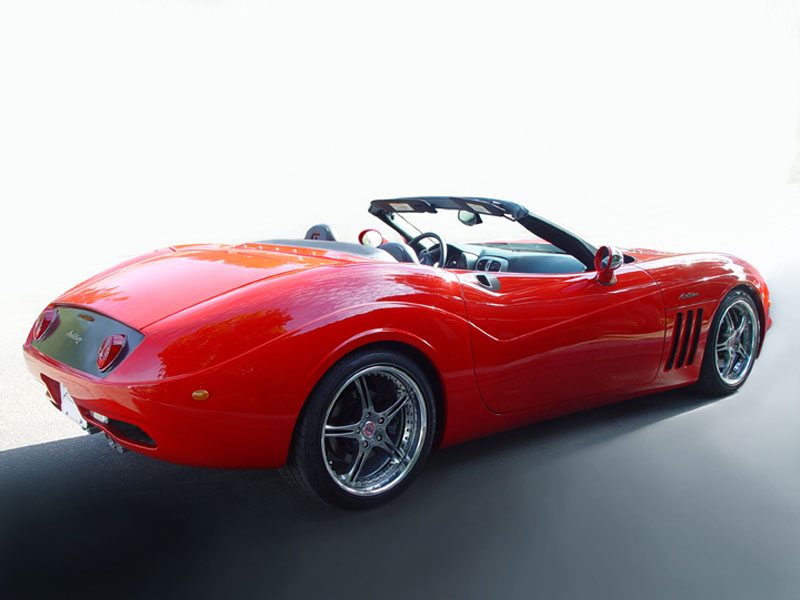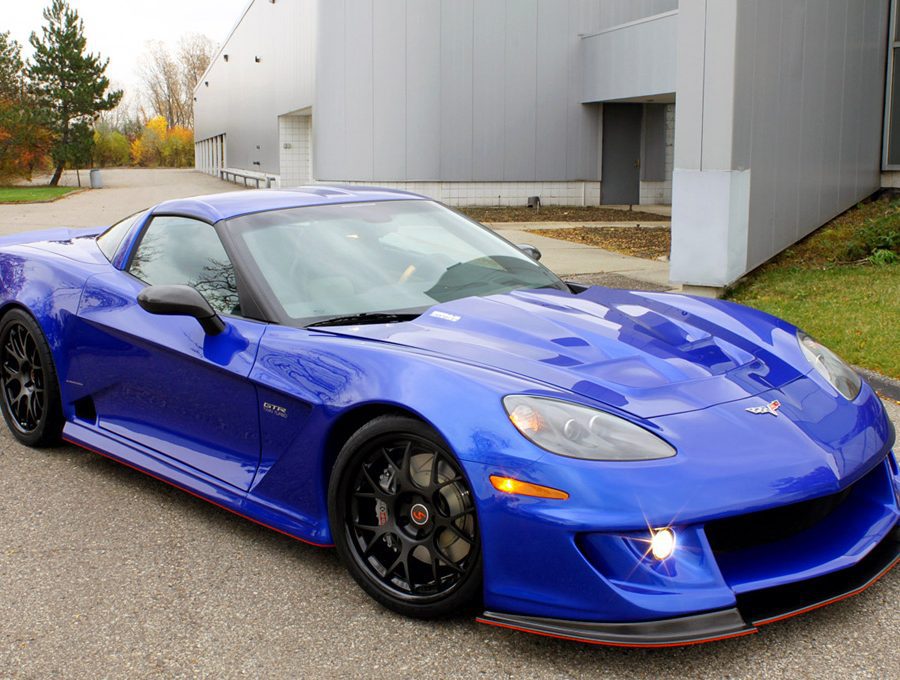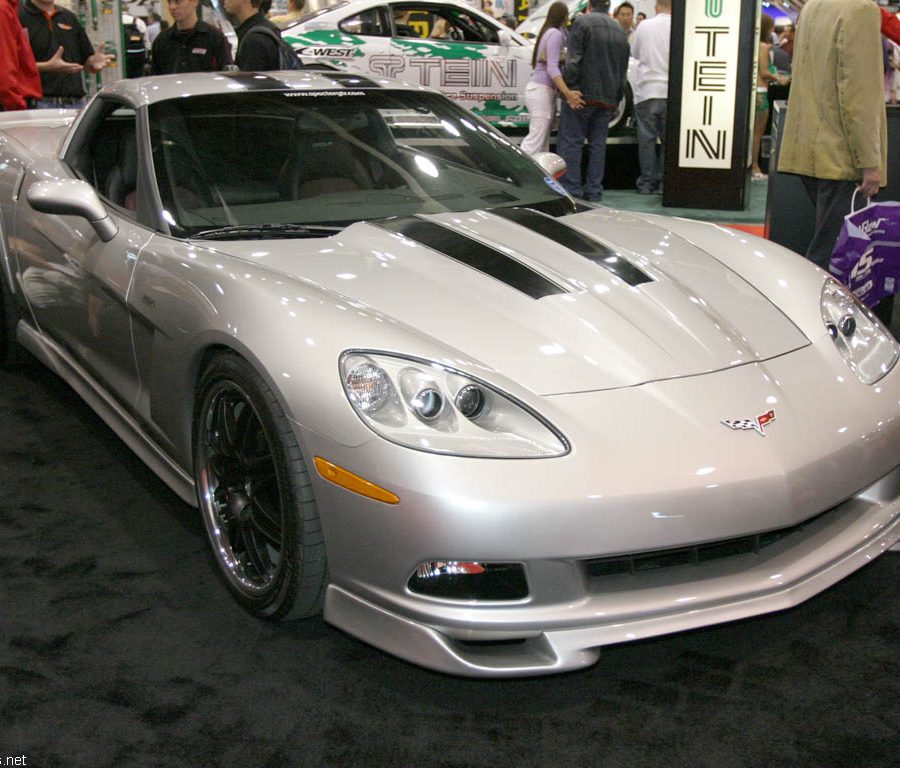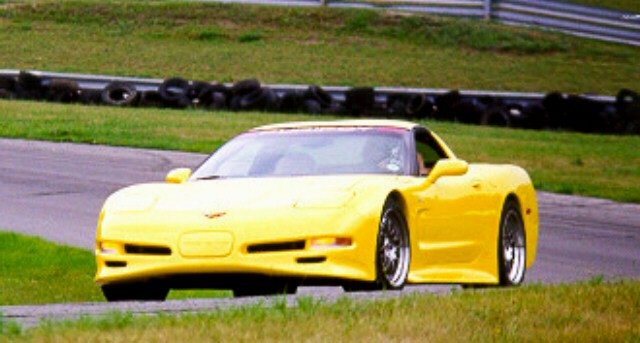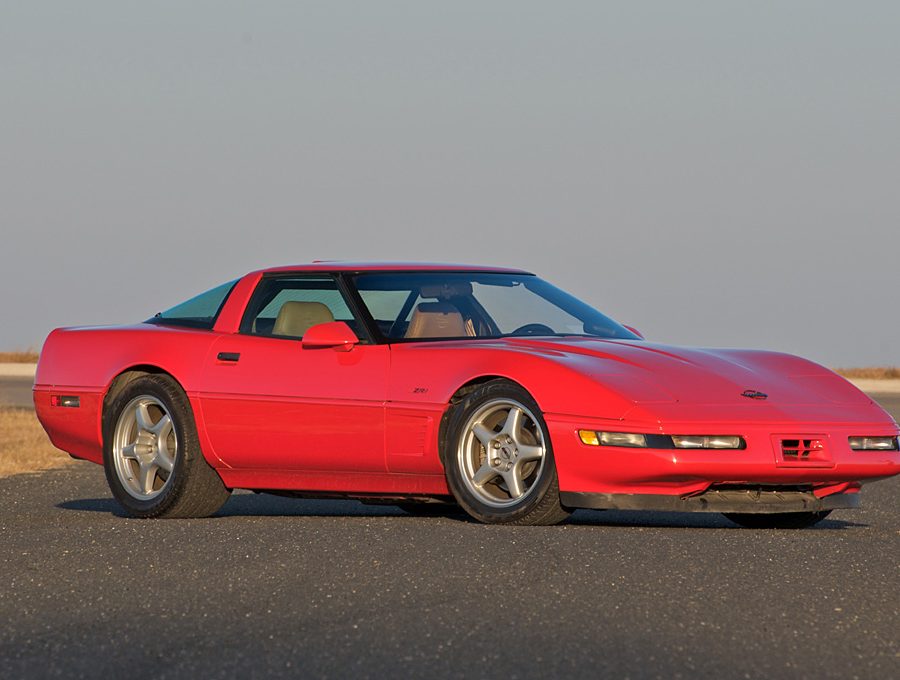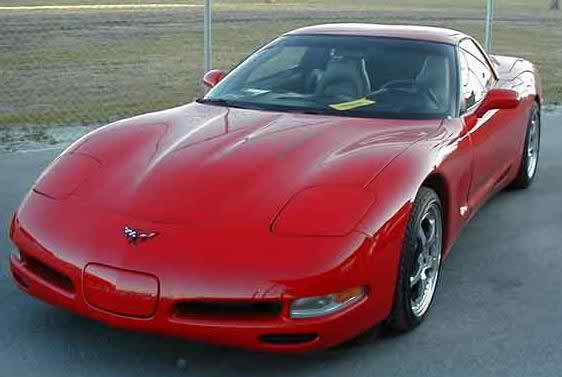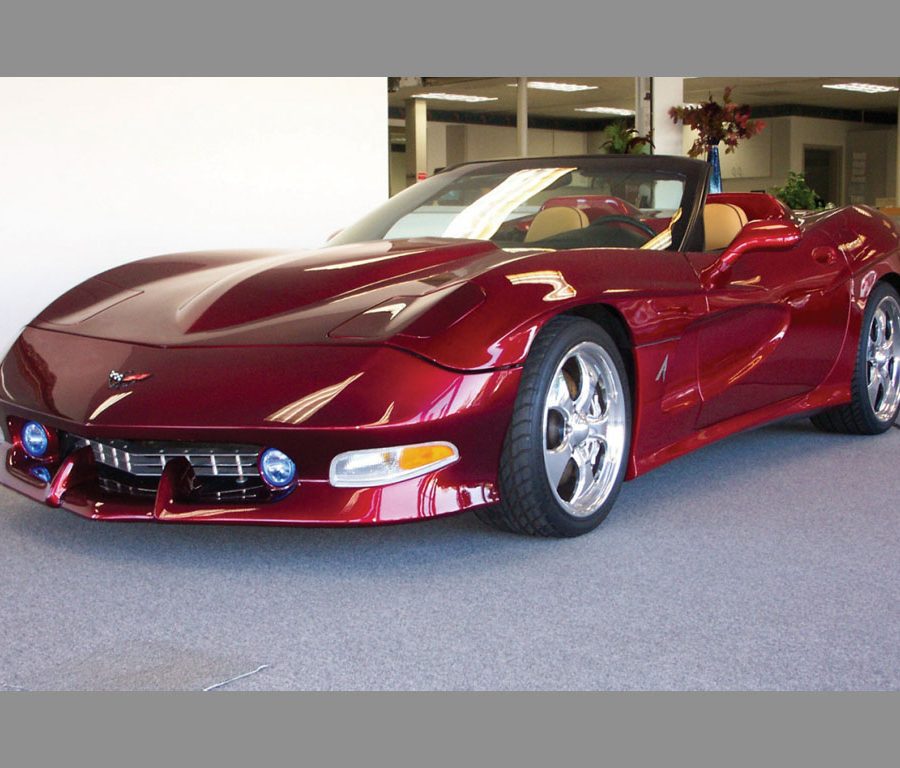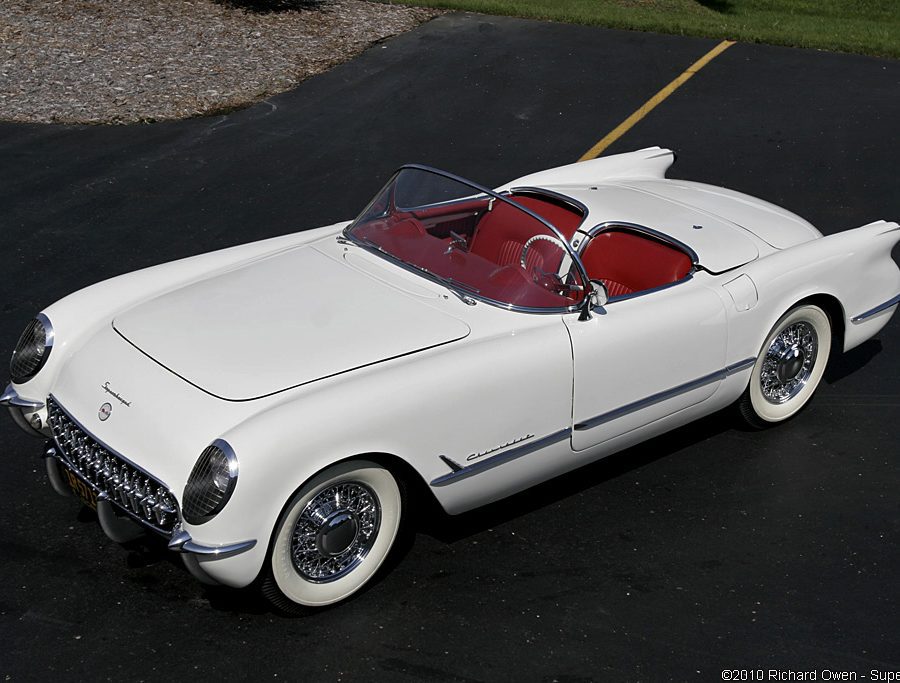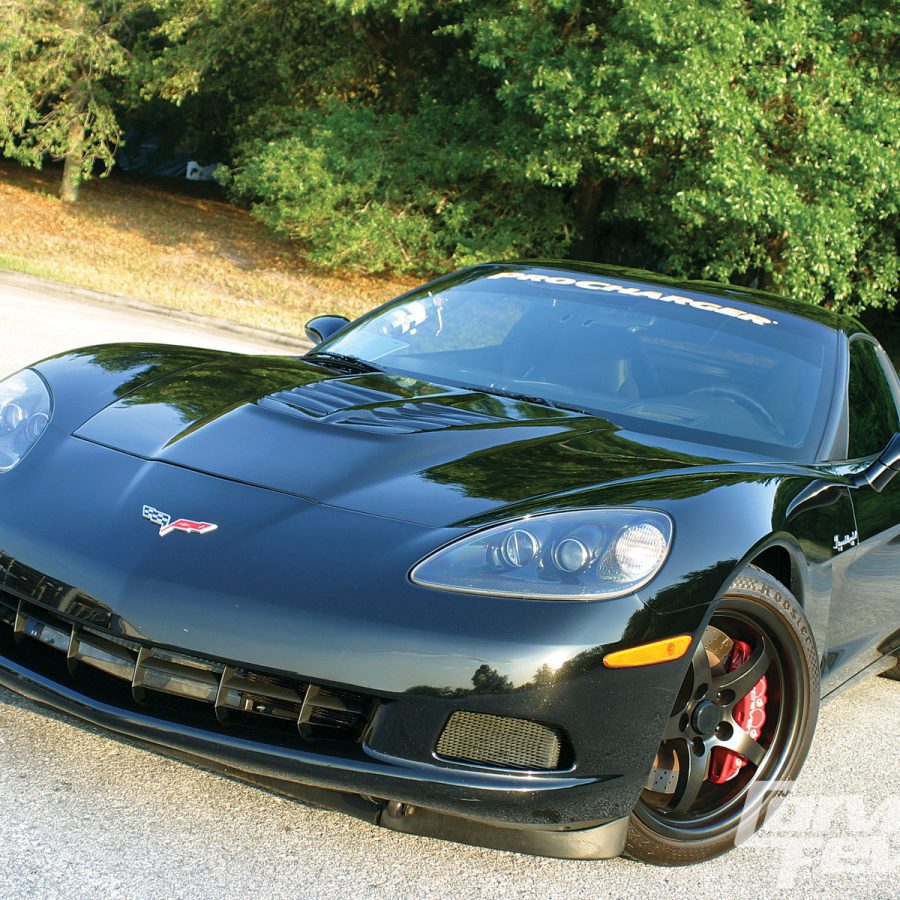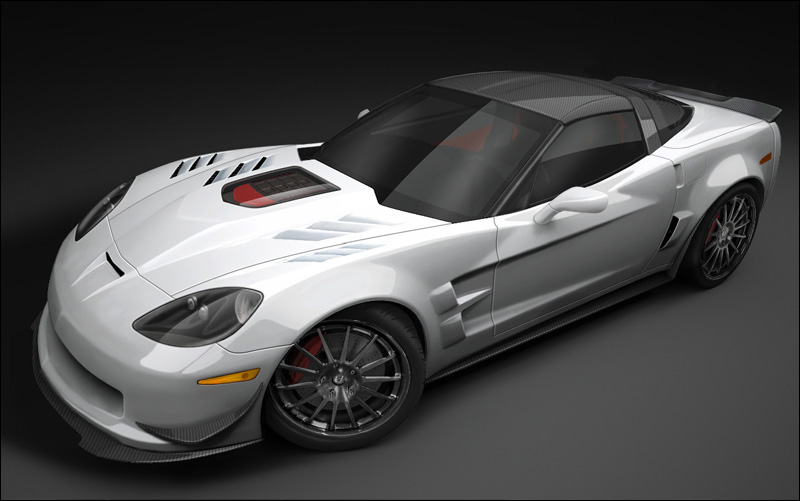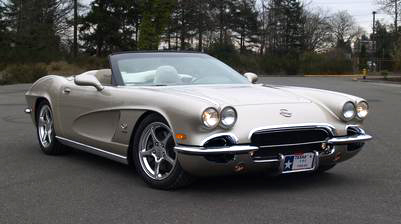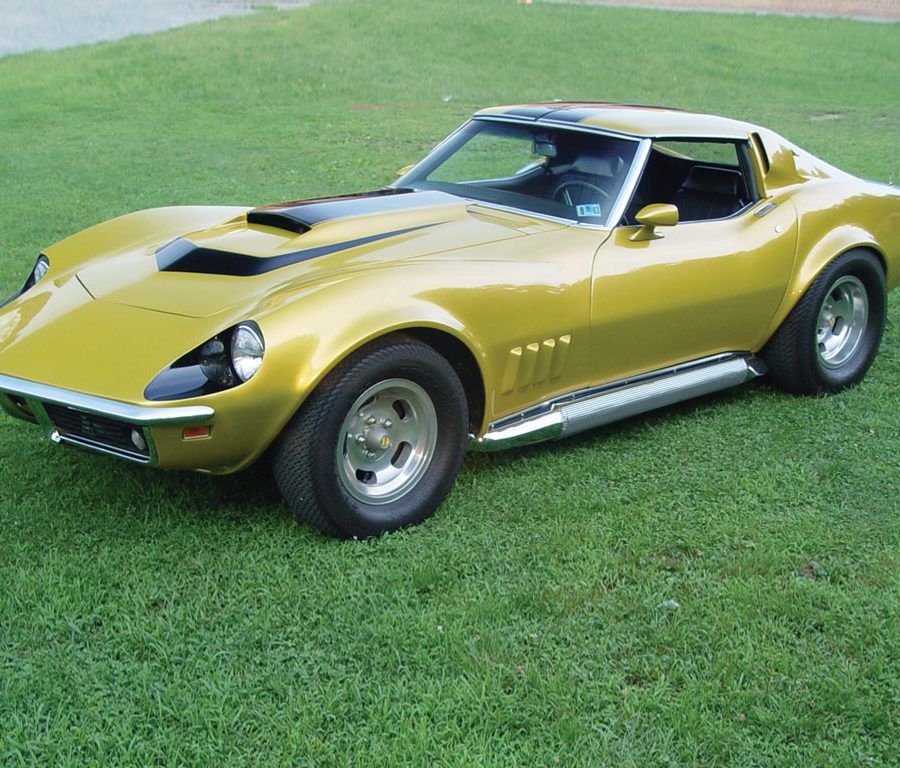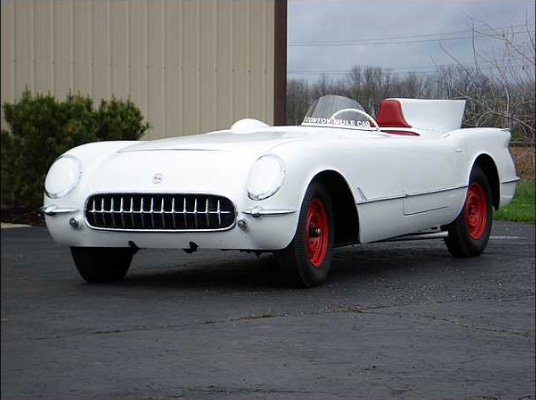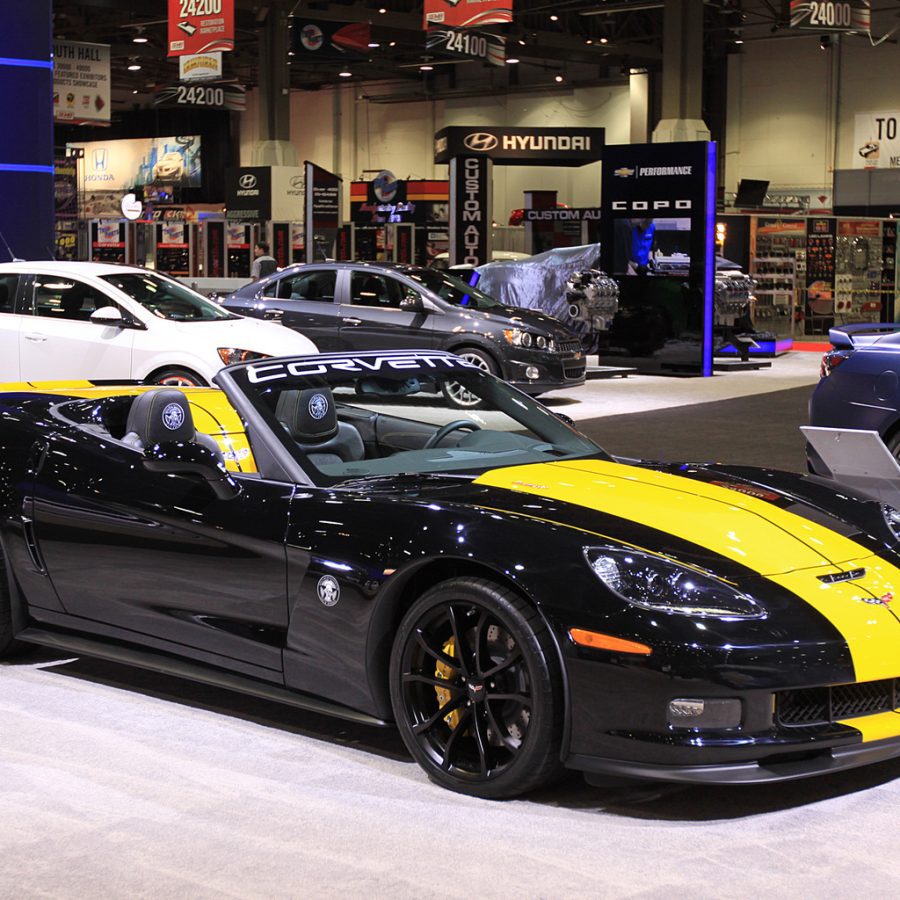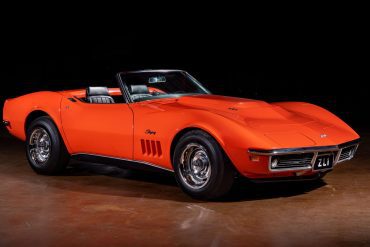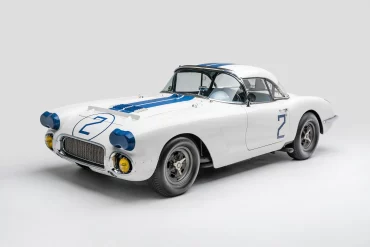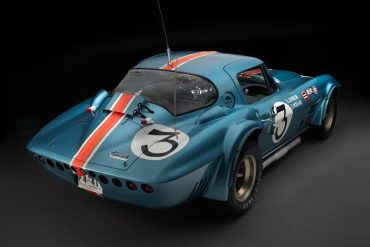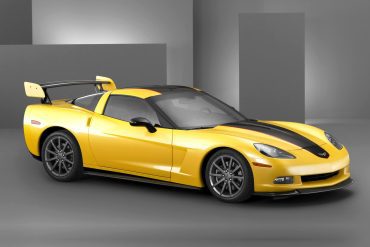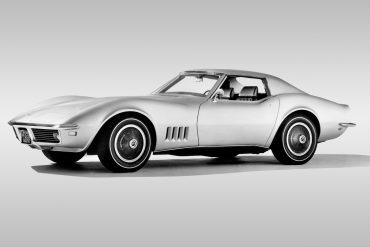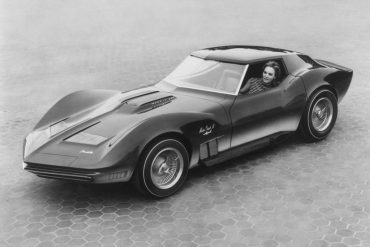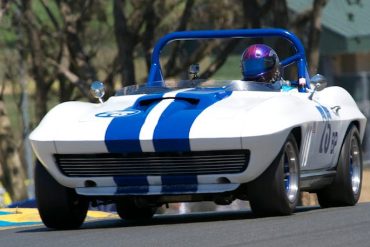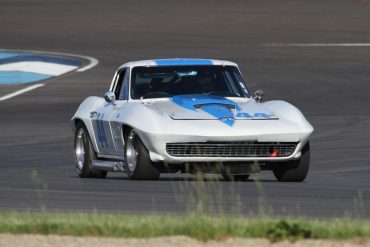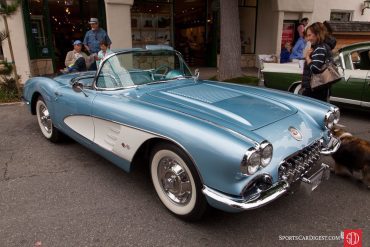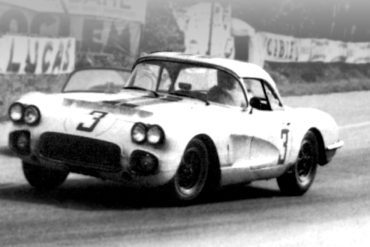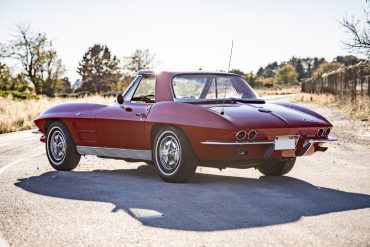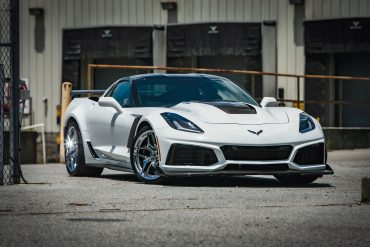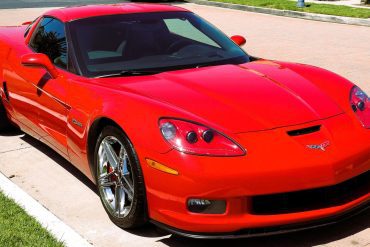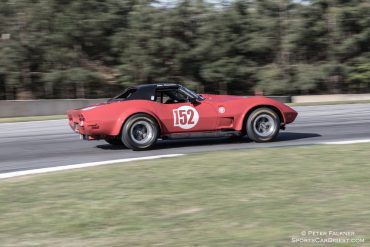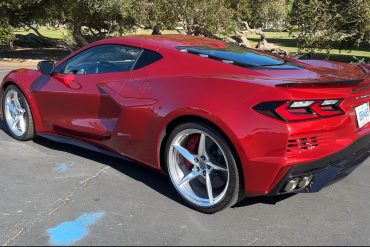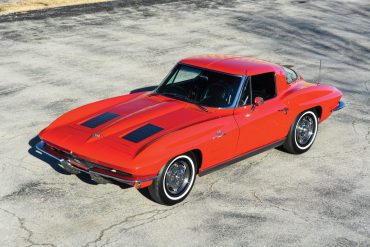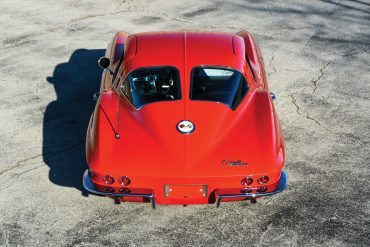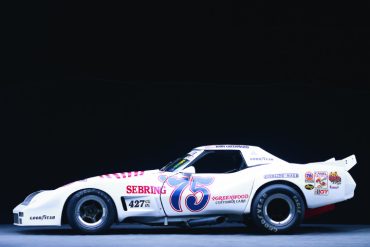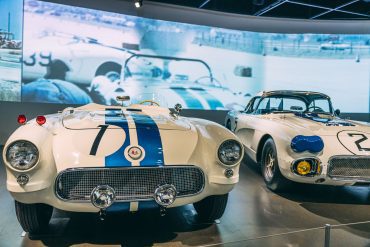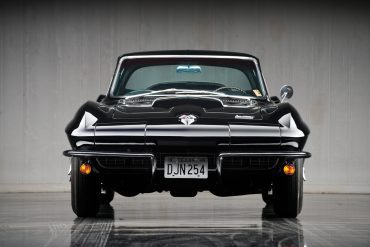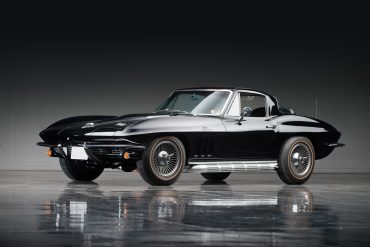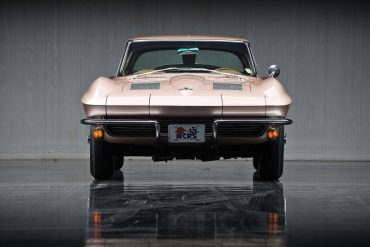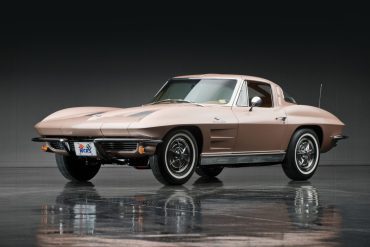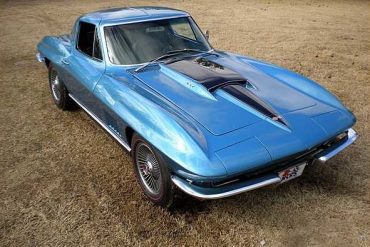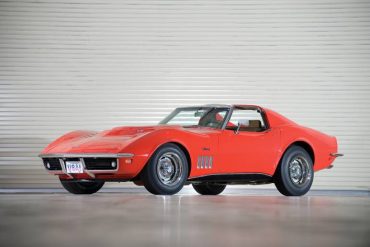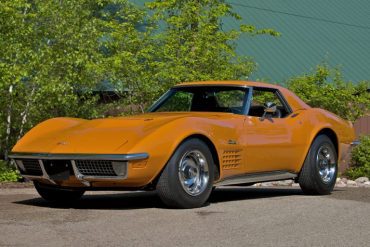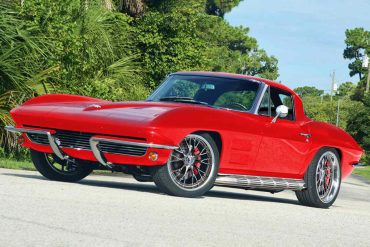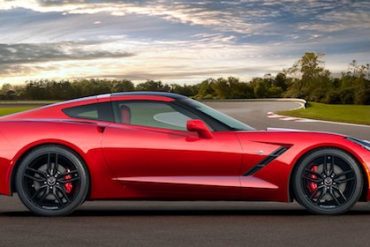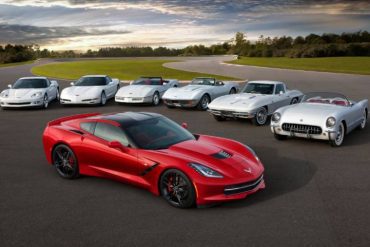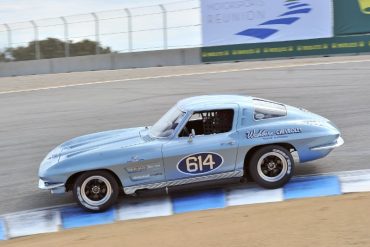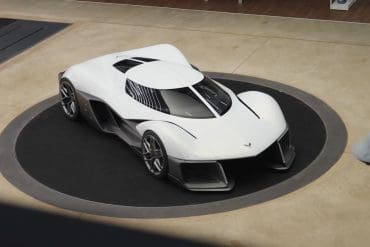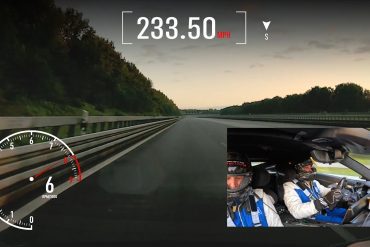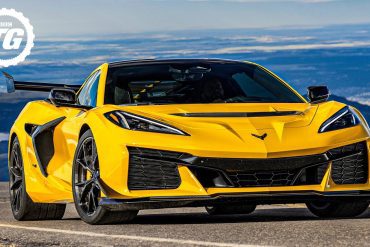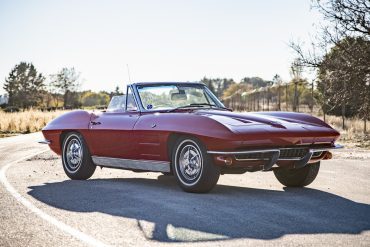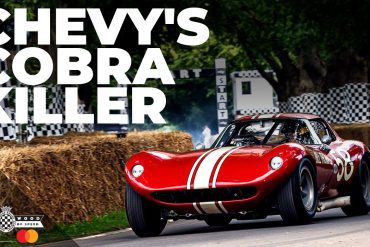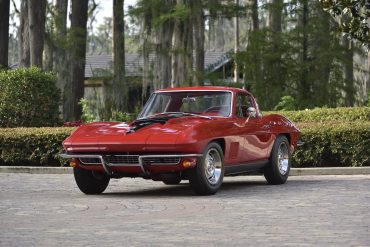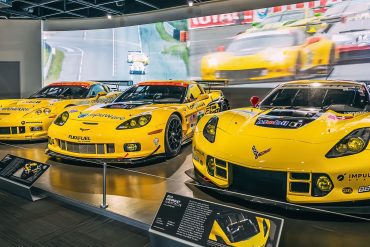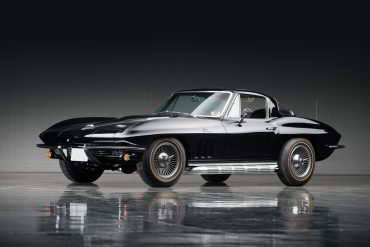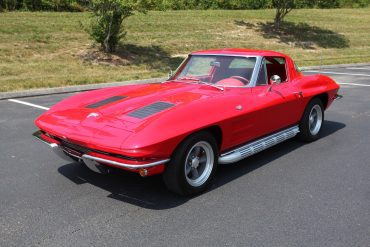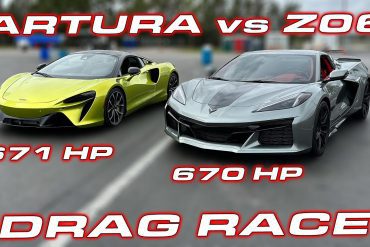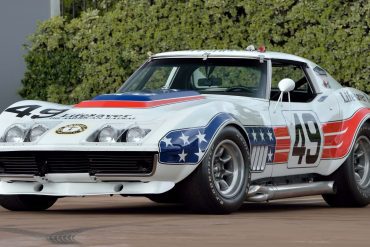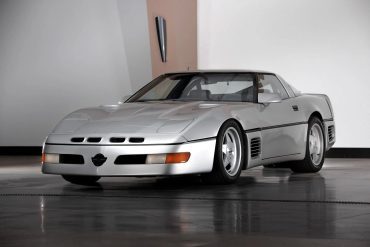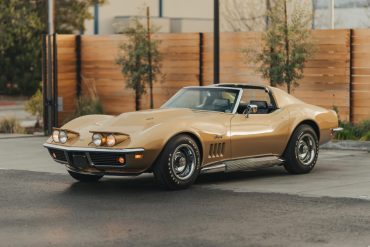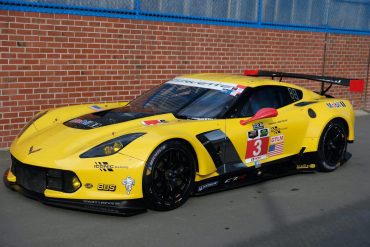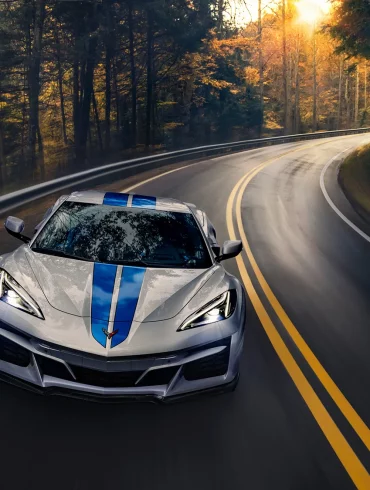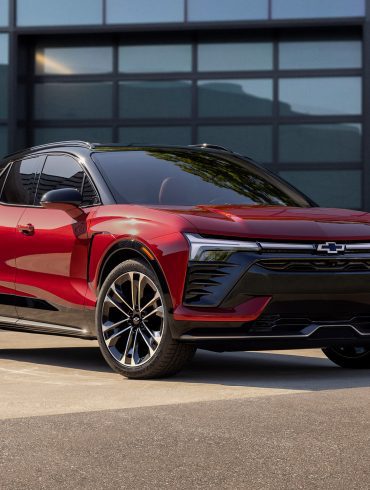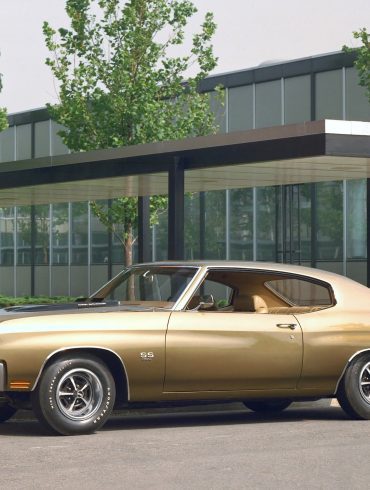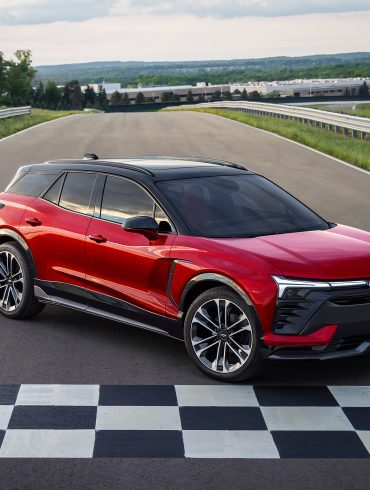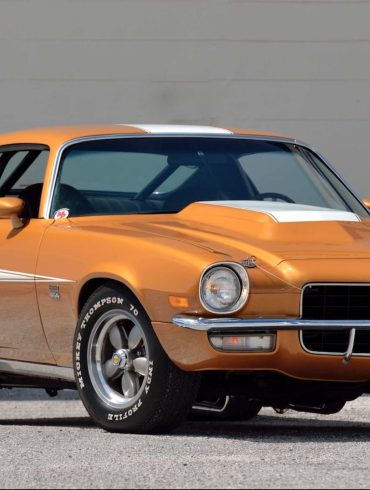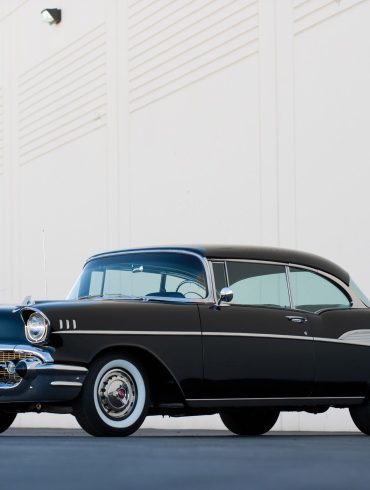Chevrolet Corvette
1953 - Present
Every Generation. Every Model Variant. Every Year.
Overview / Model & Variant List / Featured Stories / Generations / Models In-Depth / Image Gallery / More Updates
Overview
The Chevrolet Corvette, often hailed as "America's Sports Car," is a legendary performance vehicle that has seen numerous evolutions since its inception. It's distinguished by its generations, each marked by distinct design, technological advancements, and performance upgrades. Here's an overview of the Corvette's generations:
The first generation, known simply as the Corvette, debuted in 1953. It started with a modest inline-six engine and evolved to include V8 powerplants, setting the tone for performance. The C1's iconic design featured rounded edges, a convertible top, and two-seat layout, establishing the Corvette's sports car credentials.
Nicknamed the "Sting Ray," the second generation introduced a more aggressive and muscular design. This era brought significant performance upgrades, including the introduction of the big block V8 and the legendary L88 engine. The C2 also introduced the split rear window in 1963, a feature that became iconic though it was only offered for one year.
Known for its long hood and distinctive curvy body, the third generation was inspired by the Mako Shark II concept car. This era saw the introduction of T-top removable roof panels and faced challenges such as the 1970s oil crisis, leading to stricter emissions regulations and changes in horsepower ratings.
The fourth generation featured a complete redesign with more modern aesthetics, improved handling, and significant technological advancements. It introduced features like the digital dashboard and the ZR-1 model in 1990, which boasted a Lotus-engineered dual-overhead-cam V8 engine, making it one of the fastest cars at the time.
The fifth generation focused on technical advancements, with a new structure, transaxle, and LS1 V8 engine, significantly improving performance and handling. The C5 also saw the introduction of the high-performance Z06 model, a lightweight version engineered for better handling and speed.
The sixth generation refined the C5's advancements, with an even more powerful LS2 engine and later an LS3. It featured improved aerodynamics, a more luxurious interior, and introduced the ZR1 model in 2009, which boasted a supercharged LS9 V8 engine, making it one of the most potent production cars in the world at the time.
Embracing modernity, the C7 combined classic Corvette cues with contemporary design elements. It introduced the LT1 6.2L V8 engine and later the supercharged LT4 in the Z06. The pinnacle of this generation was the ZR1, with a 755-hp supercharged V8, making it the most powerful production Corvette up to that point.
The eighth and current generation represents a revolutionary change with its mid-engine layout, a first for the Corvette. This design enhances performance, handling, and driver engagement. The base model C8 Stingray sports a 6.2L LT2 V8 engine, showcasing impressive technology and performance, with variants like the Z06 further pushing the boundaries of what a Corvette can be.
Each Corvette generation reflects the automotive design and technology of its time, continuously pushing the envelope in terms of performance, design, and engineering excellence. The Corvette has not only maintained its iconic status through decades but has also embraced innovation to remain at the forefront of American sports cars.
While we are huge fans of the Corvette here the truth is that our sister site is the Corvette research hub to end all research hubs. If you are into Corvettes and want to learn more about them and all the latest Corvette news, you won't be disappointed. Below we have summarized a full list of Chevrolet Corvette models and year.
Basics
Generations
1953–1962 (C1)
1963–1967 (C2)
1968–1982 (C3)
1984–1996 (C4)
1997–2004 (C5)
2005–2013 (C6)
2014–2019 (C7)
2020–Present (C8)
Did You Know?
The 2014 Corvette Stingray (C7 generation) has a record-breaking reverse speed of 53 mph. This is only a couple mph slower than the all-time record for a car in reverse. While not the most practical feature, it certainly speaks to the power and engineering behind the iconic sports car.
More Resources
"The Chevy Corvette: Turning gas into noise since 1953."
Unknown
Chevrolet Corvette Generations
There have been eight generations of Corvette since 1953.
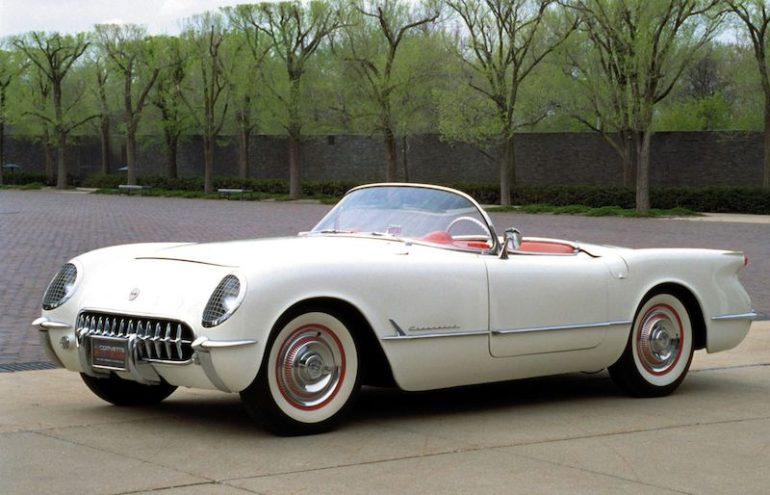
Corvette (C1) Basics
Production: Jun 1953–Jul 1962
Model Years: 1953-1962
Designer: Harley Earl
Body: 2-door coupe/convert.
Layout: Front-engine, RWD
Engine: 3.9 L Inline 6
Engine: 4.3 L Small-block V8
Engine: 4.6 L Small-block V8
Engine: 5.4 L Small-block V8
Trans: 2-speed auto
Trans: 2-speed manual
Trans: 4-speed manual
Did You Know
The original Corvette used a "Blue Flame Six" inline-6 cylinder engine. It didn't quite deliver the sports car feel the designers wanted. Luckily, the Corvette soon gained the legendary V8.
Special Variants
1960 Corvette
1961 Corvette Gulf Race Car
1959 Purple People Eater
1956 Daytona Flyer
1959 Scaglietti Coupe
1961 Corvette Vignale Coupe
1957 Corvette Ghia-Aigle
1960 Corvette “Race Rat”
1957 Corvette ‘Air Box’
More Resources
C1 Corvette (1953 - 1962)
In the pantheon of American sports cars, one name stands out with a legacy that has influenced decades of automotive design and performance: the Chevrolet Corvette. Our journey begins with the car that started it all—the first-generation Corvette, or the C1, which rolled out between 1953 and 1962. This era wasn't just about the birth of a car; it was about the inception of an icon, a symbol of freedom, power, and pure Americana.
The Birth of a Dream
The C1 Corvette emerged in a post-war America, a time ripe with optimism and an insatiable appetite for innovation and luxury. Introduced as a concept vehicle at the GM Motorama in 1953, the Corvette quickly captured the public's imagination. Its production was a bold move by Chevrolet, venturing into a market dominated by European sports cars. The Corvette offered something uniquely American—a blend of style, performance, and a hint of rebellion.
Design That Dared
The design of the C1 was a departure from the bulky, chrome-laden cars of its era. It boasted a sleek, aerodynamic silhouette that was futuristic yet elegant. The fiberglass body—a novelty at the time—was not just an innovation in materials but also allowed for the car's distinctive curves and lines. This choice of material was both practical and groundbreaking, setting a precedent for future generations.
The interior of the C1 was no less impressive, with a cockpit that offered a sense of intimacy and excitement, embodying the essence of a sports car. The two-seater configuration, simple yet functional dashboard, and the convertible top all catered to the driver's desire for both performance and pleasure.
Performance That Pioneered
Initially equipped with a Blue Flame inline-six engine, the Corvette's performance was respectable but not earth-shattering. However, Chevrolet was quick to respond to the enthusiasts' hunger for power by introducing the small-block V8 engine in 1955. This powerplant transformed the Corvette from a stylish cruiser into a bona fide performance machine, capable of holding its own against the more established European sports cars.
The subsequent introduction of the 283-cubic inch V8 in 1957, with the option of fuel injection, marked another milestone, making the Corvette one of the first mass-produced cars to achieve one horsepower per cubic inch. This era saw the Corvette not only gaining speed but also sophistication, with improvements in handling, braking, and overall drivability.
Racing and the Corvette Legacy
The C1 Corvette wasn't just a marvel on the streets; it was a force to be reckoned with on the racetrack. Chevrolet's decision to engage in motorsports was pivotal in cementing the Corvette's reputation. The car's success in various races, including the famed Le Mans, showcased its potential and laid the foundation for its enduring legacy as a performance icon.
A Cultural Phenomenon
Beyond its tangible attributes, the C1 Corvette became a symbol of American culture—a representation of freedom, innovation, and the pursuit of pleasure. It was more than a car; it was a lifestyle, a statement of individuality and excellence. Owning a Corvette was, and still is, a declaration of one’s appreciation for the finer things in life, coupled with a passion for speed and performance.
The Legacy Continues
Today, the C1 generation Corvette stands as a testament to Chevrolet’s vision and engineering prowess. It laid the groundwork for what would become a legendary lineage of sports cars, each generation building on the last, yet never forgetting the original spirit embodied in the C1. Collectors and enthusiasts revere the C1 not just for its historical significance but for the timeless beauty and pure driving joy it offers.
As we look back at the C1 Corvette, we're reminded of the journey automotive design and engineering have undertaken. From the audacious lines to the roaring V8 engines, the first-generation Corvette is not just a chapter in automotive history; it's the beginning of a legacy that continues to inspire and captivate, a true icon of American ingenuity and spirit.
C2 Corvette (1963 - 1967)
The 1963 to 1967 Chevrolet Corvette, known as the C2 generation, marked a significant evolution in the Corvette lineage, introducing the world to the "Sting Ray" - a name that would become synonymous with American sports car excellence. This period is often regarded as a golden era, where innovative design, engineering brilliance, and a spirit of bold experimentation converged to create a car that was not only ahead of its time but also timeless in its appeal.
A Design Revolution
The C2 Corvette was a radical departure from its predecessor, both aesthetically and mechanically. Spearheaded by the legendary GM designer Bill Mitchell, the C2's design was inspired by the sleek, aerodynamic lines of the Stingray concept and the race-proven engineering of the Corvette SS. The result was a vehicle that possessed an aggressive stance, with a sharply contoured body that seemed to be in motion even at a standstill.
The introduction of the split rear window in the 1963 coupe is perhaps the most iconic design feature of the era, creating a futuristic look that, although controversial at the time, is now revered. The C2 also featured retractable headlights, a first for Corvette, adding to its sleek, uninterrupted lines, which would become a signature element in future generations.
Performance Prowess
The C2 generation was about more than just good looks; it was a performance powerhouse. The introduction of the Chevrolet small-block V8 engine in the C1 was taken to new heights in the C2, with options like the 327 cubic inch and, later, the 427 cubic inch engines, the latter offering unprecedented power that solidified the Corvette's reputation on the street and the track.
The Corvette also saw significant advancements in engineering, with the introduction of independent rear suspension, which greatly improved handling and ride comfort. The addition of disc brakes, increased power, and refined aerodynamics meant that the C2 was not only fast but also agile, capable of competing with the best that Europe had to offer.
Racing and the Grand Sport
The C2 Corvette's legacy is also tied to its racing achievements, particularly the legendary Grand Sport program. Under the direction of engineer Zora Arkus-Duntov, a handful of lightweight, race-ready Corvettes were created to take on the world's best in international sports car racing. While the full racing program never came to fruition due to GM's official exit from motorsport, the Grand Sport Corvettes became legends, embodying the racing spirit and performance potential of the Corvette.
Cultural Icon
Beyond its mechanical and racing credentials, the C2 Corvette became a cultural icon of the 1960s. It was a symbol of American optimism, innovation, and the spirit of competition. Owning a Sting Ray was more than just a statement of one's taste for speed and style; it was an embodiment of living the American dream, the ultimate expression of freedom and exhilaration.
Legacy of the Sting Ray
Today, the C2 Corvette stands as a high watermark in automotive design and performance. It represents a time when daring innovation and cutting-edge technology were the norms, where design and performance blended seamlessly. The Sting Ray's influence is undeniable, setting a standard for what a sports car could be and inspiring generations of automotive enthusiasts and designers.
Collectors and aficionados still revere the C2, not only for its groundbreaking design and engineering but also for the indelible mark it left on the automotive landscape. It remains a potent symbol of a time when cars were about passion, adventure, and the pure joy of driving.
In the pantheon of great American automobiles, the C2 Corvette shines as a testament to the ingenuity and spirit of an era. It encapsulates a moment in time when the future was limitless, and cars were the ultimate expression of freedom and innovation. The Sting Ray is not just a car; it's a chapter in the story of American greatness, a masterpiece of design and engineering that continues to captivate hearts and minds across the globe.
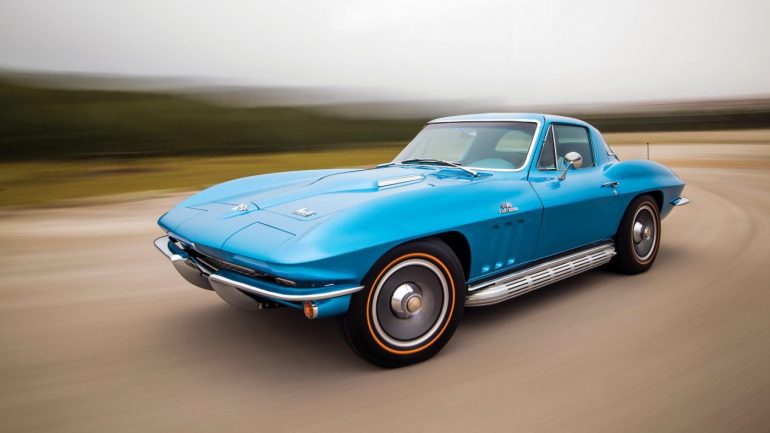
Corvette (C2) Basics
Production: Aug 1962–Jul 1967
Model Years: 1963-1967
Designer: Larry Shinoda
Body: 2-door coupe/convert.
Layout: Front-engine, RWD
Engine: 5.4 L V8
Engine: 5.4 L L75 V8
Engine: 5.4 L L76 V8
Engine: 5.4 L L79 V8
Engine: 5.4 L L84 V8
Engine: 6.5 L L78 V8
Engine: 7.0 L L36 V8
Engine: 7.0 L L68 V8
Engine: 7.0 L L71 V8
Engine: 7.0 L L72 V8
Engine: 7.0 L L88 V8
Engine: 7.0 L L89 V8
Trans: 3-speed manual
Trans: 4-speed manual
Trans: 4-speed auto
Did You Know
The 1963 Corvette Sting Ray with its split rear window is now one of the most sought-after Corvettes. Due to visibility concerns and Zora Arkus-Duntov disliking the design, it was removed in 1964. This makes the 1963 model with the split window quite a rare gem!
Special Variants
1964 ‘GM Styling Special’
1964 Corvette Sting Ray XX
1967 Corvette Sting Ray L89
1967 Corvette Sting Ray L68
1967 Corvette Sting Ray L71
1963 Corvette Grand Sport
1966 Corvette Stingray 427
1965 Corvette Sting Ray L78
1963 Corvette Z06
1965 Convertible L84
1967 Corvette L88
More Resources
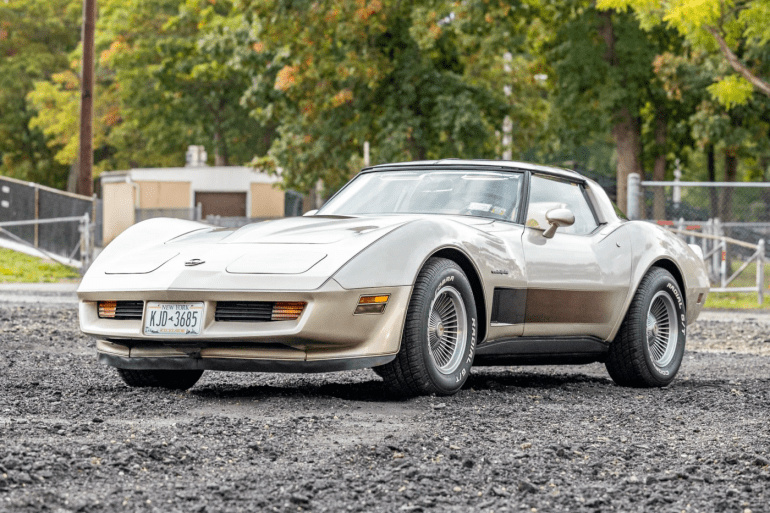
Corvette (C3) Basics
Production: Aug 1968–Oct 1982
Model Years: 1968-1982
Designer: Bill Mitchell
Body: 2-door coupe/convert.
Layout: Front-engine, RWD
Engine: 5.0 L LG4 V8
Engine: 5.4 L L75 V8
Engine: 5.4 L L79 V8
Engine: 5.7 L Small-Block V8
Engine: 5.7 L L46 V8
Engine: 5.7 L L48 V8
Engine: 5.7 L L81 V8
Engine: 5.7 L L82 V8
Engine: 5.7 L L83 V8
Engine: 5.7 L LT-1 V8
Engine: 5.7 L ZQ3 V8
Engine: 7.0 L L36 V8
Engine: 7.0 L L68 V8
Engine: 7.0 L L71 V8
Engine: 7.0 L L72 V8
Engine: 7.0 L L88 V8
Engine: 7.0 L L89 V8
Engine: 7.0 L ZL1 V8
Engine: 7.4 L LS4 V8
Engine: 7.4 L LS5 V8
Engine: 7.4 L LS6 V8
Trans: 3-speed manual
Trans: 4-speed manual
Trans: 3-speed auto
Trans: 4-speed auto
Did You Know
The sleek, aggressive C3 Corvette body style was a direct evolution of the Mako Shark II concept car. The Mako Shark II's pointed nose, flowing lines, and gill-like side vents all found a place in the production C3 Corvette.
Special Variants
1982 Corvette Collector Edition
1975 Greenwood Sportwagon
1982 “Greenwood Daytona”
1968 Corvette Sting Ray L89
1980 Duntov Turbo (Corvette)
1971 ZR1 & ZR2 Corvette
1968 Baldwin Motion Corvettes
1969 Corvette ZL-1
1978 Silver Anniversary Edition
1978 Indy Pace Car Model
1967 Corvette L88
More Resources
C3 Corvette (1968 - 1982)
The C3 Corvette, reigning from 1968 to 1982, is often celebrated as one of the most iconic periods in the lineage of America's sports car. This era, marked by its dramatic styling and the embodiment of the muscle car ethos, held onto the Corvette's performance legacy while navigating through the tumultuous landscape of the 1970s automotive industry. The C3 Corvette wasn't just a car; it was a cultural phenomenon, encapsulating the spirit of its time with its distinctive design and powerful presence.
A Design Masterpiece
The C3 Corvette, inspired by the Mako Shark II concept car, was a stylistic revolution. Its design was a bold leap forward, featuring a long, flowing hood, dramatically flared fenders, and a sleek, tapering rear end. The car's body was not just a vehicle but a work of art, showcasing curves and contours that evoked the sense of speed and power even when parked. The introduction of T-top removable roof panels added a new dimension of open-air freedom, enhancing the Corvette's appeal as a symbol of leisure and luxury.
The Corvette's interior also saw significant enhancements, focusing on driver comfort and engagement. The cockpit was designed to envelop the driver, providing a sense of connection to the machine, with improved ergonomics and instrumentation that prioritized the driving experience.
Performance Evolution
The early years of the C3 generation witnessed the peak of the muscle car era, with the Corvette equipped with formidable big-block V8 engines that delivered staggering performance. However, the landscape of the automotive world was changing rapidly. Emissions regulations, fuel shortages, and insurance costs began to influence the engineering and design decisions of the era, leading to a gradual decrease in horsepower ratings as the generation progressed.
Despite these challenges, the Corvette remained a performance leader. Chevrolet adapted by enhancing the Corvette's engineering, focusing on handling, braking, and overall drivability. The introduction of models like the L82 offered a balance of performance and efficiency, while special editions like the 1978 Silver Anniversary and the 1982 Collector Edition provided enthusiasts with unique, collectible versions of this iconic car.
Racing and Beyond
The C3 Corvette also had a notable presence in motorsport, particularly in showroom stock, GT, and endurance racing. Its performance on the track helped to sustain the Corvette's reputation for speed and durability, with notable entries in events like the 24 Hours of Le Mans and various SCCA categories, proving that the Corvette could compete on a global stage.
Cultural Impact
The C3 Corvette became more than just a vehicle; it was a cultural icon, embodying the spirit of its era. Its appearance in movies, television shows, and other media cemented its status as a symbol of high performance and high style. The Corvette was no longer just a car but a statement, representing the ultimate American dream of freedom, power, and individuality.
Legacy of the C3 Corvette
Today, the C3 generation is celebrated for its audacious design, its resilience in the face of changing automotive landscapes, and its enduring legacy as a quintessential American sports car. It represents a period of transition, innovation, and adaptation, reflecting both the challenges and triumphs of the automotive industry during the 1970s and early 1980s.
Collectors and enthusiasts cherish the C3 Corvette for its unique combination of style, performance, and historical significance. It stands as a testament to the Corvette's enduring appeal, a chapter in the ongoing saga of an automotive legend that continues to captivate the imagination of car lovers around the world.
In reflecting on the C3 Corvette, we see more than just a car; we see a piece of American history, a symbol of the relentless pursuit of performance and style, and a reminder of the enduring legacy of the Corvette nameplate.
C4 Corvette (1984 - 1996)
The introduction of the C4 Corvette in 1984 marked a significant evolution in the storied history of Chevrolet's flagship sports car. This generation, which spanned from 1984 to 1996, was a groundbreaking departure from its predecessors, boasting advanced technology, sophisticated engineering, and a completely revamped design. The C4 didn't just carry forward the Corvette legacy; it redefined it for a new era, merging the line between track performance and everyday drivability.
A Bold Leap Forward in Design
The C4 Corvette's design was a radical shift from the curvaceous C3. It featured a sleek, modern aesthetic with clean lines, a low-profile stance, and a more aerodynamic body that significantly reduced drag. The removable targa-style roof panel, which became a signature feature, offered drivers the exhilaration of open-air driving while maintaining the rigidity and strength of a coupe.
The interior of the C4 was equally revolutionary, designed with a focus on ergonomics and functionality. The digital dashboard was state-of-the-art at the time, providing drivers with a futuristic and interactive driving experience. The overall layout prioritized the driver, with improved seating, visibility, and control placement, enhancing the sense of connection between the car and the road.
Technological Advancements and Performance
Under the hood, the C4 Corvette was a marvel of automotive engineering. The introduction of the L83 V8 engine, and later the more powerful LT1, LT4, and the LT5 in the ZR-1, provided robust performance capabilities. The ZR-1, in particular, became an icon of this generation, with a Lotus-designed engine that shattered performance records and earned the nickname "King of the Hill."
Handling and agility were paramount in the C4's design, with a sophisticated suspension system that featured lightweight materials and computer-controlled components. The introduction of the Selective Ride Control system allowed drivers to adjust the firmness of the ride, adapting to different driving conditions and preferences.
A Legacy on the Racetrack
The C4 Corvette made its mark not only on the road but also on the racetrack. It dominated in showroom stock racing, reaffirming the Corvette's status as a performance benchmark. The Corvette Challenge series, a one-make race featuring the C4, showcased the car's capabilities and reliability under competitive conditions, highlighting its prowess and durability in a racing environment.
The Corvette's Cultural Impact
Throughout its production run, the C4 Corvette became more than just a sports car; it was a cultural icon that captured the imagination of enthusiasts and the general public alike. It was a frequent star in movies, television shows, and other media, symbolizing speed, technology, and the allure of American engineering.
Reflecting on the C4 Legacy
The C4 Corvette is often celebrated for bringing the Corvette into the modern age of performance cars. It bridged the gap between the raw power of earlier models and the refined, technologically advanced vehicles of the future. Its impact is still felt in the automotive world, as it set new standards for what a sports car could be, combining performance, style, and technological innovation in a package that was distinctly Corvette.
Collectors and enthusiasts continue to admire the C4 for its contributions to the Corvette lineage, appreciating its blend of 80s and 90s charm with groundbreaking advancements. The C4 era is a testament to Corvette's enduring legacy of pushing the boundaries of automotive design and performance, ensuring the marque's place in the pantheon of great American sports cars.
In retrospection, the C4 Corvette stands as a pivotal chapter in the Corvette saga, encapsulating a period of transformation and resurgence. It remains a symbol of the relentless pursuit of perfection, a hallmark of the Corvette ethos that continues to inspire and captivate the hearts of automotive enthusiasts around the globe.
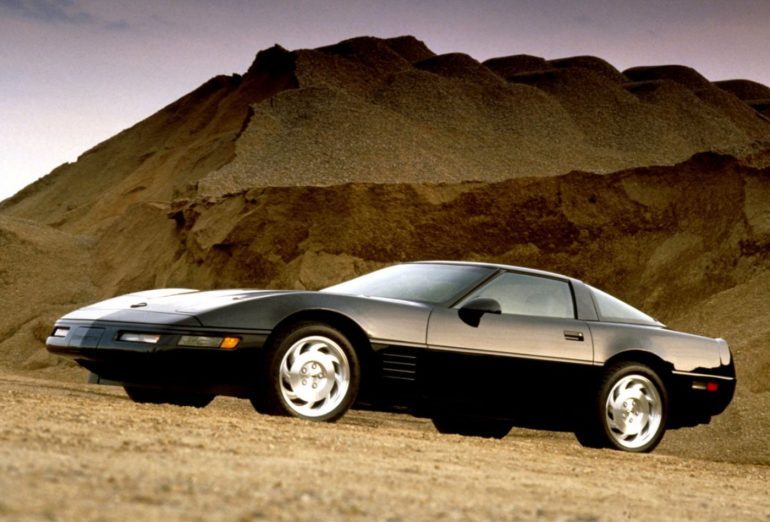
Corvette (C4) Basics
Production: Jan 1983–Jun 1996
Model Years: 1984-1996
Designer: Jerry Palmer
Body: 2-door targa/convert.
Layout: Front-engine, RWD
Engine: 5.7 L L83 V8
Engine: 5.7 L L98 V8
Engine: 5.7 L LT1 V8
Engine: 5.7 L LT4 V8
Engine: 5.4 L LT5 V8
Trans: 4-speed 700R4 auto
Trans: 4 speed manual ('84–'88)
Trans: 4-speed auto ('94–'96)
Trans: 6-speed ZF manual
Did You Know
The C4 Corvette (1984-1996) featured a digital instrument panel that was way ahead of its time. Instead of traditional analog gauges, it displayed speed, RPM, fuel levels, and other vital information in a futuristic digital format. This cutting-edge dash display definitely set the C4 apart from most cars of its era.
Special Variants
1995 Corvette GT1 C4 ZR1
1992 ZR-12 Corvette Falconer
1993 Corvette 40th Anniv. ZR-1
1991 Callaway Speedster LM
1996 Corvette Grand Sport
1989 Corvette ZR1 ‘Snake Skinner’
1996 Corvette Collector Edition
1984 Corvette Indy 500 Pace
1994 Callaway SuperNatural C6
1990 ZR-1 Corvette
1992 Callaway SuperNatural
1986 Corvette Indy 500 Pace
1995 Corvette Indy 500 Pace
1988 Corvette 35th Anniversary
1989 Corvette ZR2 ‘Big Doggie’
1993 Callaway CR1 Corvette
1987 Callaway Corvette B2K TT
More Resources
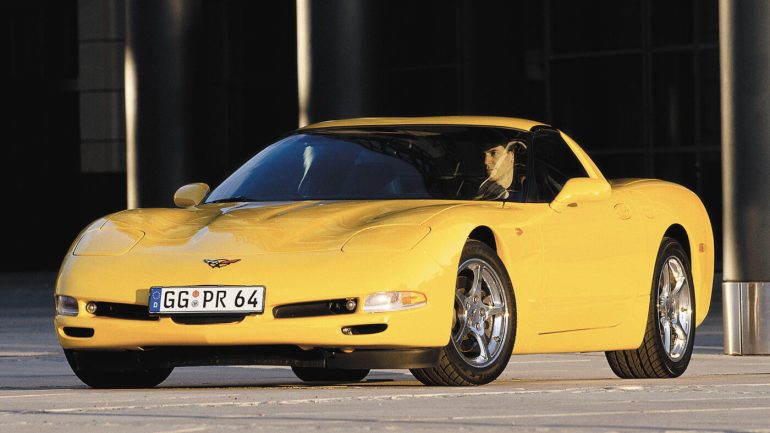
Corvette (C5) Basics
Production: Oct 1996–Jul 2004
Model Years: 1997-2004
Designer: John Cararo
Body: 2-door coupe/conv/hardtop
Layout: Front-engine, RWD
Engine: 5.7 L LS1 V8
Engine: 5.7 L LS6 V8 (Z06)
Trans: 6-speed manual (T-56)
Trans: 4-speed auto
Did You Know
It had a structural backbone made of...balsa wood? Well, not entirely. The C5 Corvette's floor was made from a unique sandwich composite that included a core of balsa wood. This helped reduce weight and increase rigidity.
Special Variants
2004 Le Mans Commemorative
2001 Corvette Z06
1998 Greenwood G5R Corvette
1998 Corvette Indy Pace Car
1999 Corvette Le Mans Pace Car
2003 Corvette 50th Anniversary
1997 – 2001 Callaway C12
2004 Corvette Indy Pace Car
2002 Corvette Indy Pace Car
1999 Corvette Daytona Pace Car
2003 Guldstrand 50th Anniv.
1999 Corvette C5-R
More Resources
C5 Corvette (1997 - 2004)
As the fifth installment of Chevrolet's legendary sports car, the C5 Corvette, which debuted in 1997 and continued through 2004, marked a significant transformation in the model's history. This generation was more than just an evolution; it was a revolution, showcasing groundbreaking engineering, sophisticated technology, and a refined design that propelled the Corvette into the modern era of performance vehicles.
Revolutionary Engineering and Design
The C5 Corvette was a radical departure from its predecessors, designed from the ground up to be a lighter, stiffer, and more agile sports car. At its core was a new hydroformed box frame, which provided increased rigidity and reduced weight. This engineering leap significantly enhanced the handling, performance, and overall feel of the car, setting a new standard for what American sports cars could achieve.
The C5's design was both elegant and aerodynamic, featuring a sleek, streamlined body that maintained the Corvette's aggressive styling cues while improving its efficiency and speed. The car's aesthetics were matched by its practicality, offering a more spacious and comfortable interior and a larger cargo area, making the C5 not only a performance powerhouse but also a suitable companion for long journeys.
Performance Innovations
Under the hood, the C5 Corvette introduced the world to the LS1 V8 engine, a marvel of modern engineering that provided a remarkable blend of power, reliability, and efficiency. This 5.7-liter engine was capable of producing 345 horsepower at its debut and was later upgraded to 350 horsepower, propelling the Corvette from 0 to 60 mph in just over 4.5 seconds. The introduction of the LS6 engine in the Z06 model took performance to even higher levels, with 405 horsepower and enhanced handling to match.
The C5 was not only about straight-line speed; it was also about refined handling and agility. With a near-perfect weight distribution and an updated suspension system, the Corvette offered a driving experience that was both exhilarating and precise, allowing drivers to feel connected to the road like never before.
The Birth of the Z06
The C5 generation saw the reintroduction of the Z06, a nameplate that had been dormant since the early '60s. The new Z06 was a track-focused marvel, lighter, faster, and sharper than the standard Corvette. It was a testament to Chevrolet's commitment to high performance, offering a car that could dominate on the racetrack and still be driven comfortably on the streets.
Technological Advancements
The C5 Corvette was at the forefront of technological integration in sports cars, featuring advanced systems such as the Active Handling system, which helped drivers maintain control during high-speed maneuvers, and the Heads-Up Display (HUD), which projected vital information onto the windshield. These features, along with refinements in the car's suspension, brakes, and overall build quality, made the C5 a technologically advanced vehicle that was ahead of its time.
Legacy and Impact
The C5 Corvette redefined what was expected from an American sports car, blending speed, handling, comfort, and reliability in a package that was accessible to a wide range of enthusiasts. It laid the groundwork for future generations, proving that the Corvette could compete on a global scale with the world's best sports cars.
Today, the C5 is celebrated for its significant advancements and enduring legacy. It is cherished by collectors and enthusiasts alike, not just for its performance and technological achievements but also for its role in reinvigorating the Corvette brand. The C5 Corvette stands as a pivotal chapter in the ongoing story of America's most iconic sports car, continuing to inspire admiration and respect from the automotive community.
C6 Corvette (2005-2013)
The sixth generation of the Chevrolet Corvette, known as the C6, spanned from 2005 to 2013 and is celebrated for honing the formula that had made its predecessor so successful while pushing the boundaries of performance and refinement. The C6 Corvette sharpened the edge of American sports car engineering, delivering a combination of raw power, sophisticated technology, and a design that was both contemporary and unmistakably Corvette.
Evolutionary Design, Revolutionary Performance
Building on the C5's revolutionary platform, the C6 refined its aesthetics and ergonomics while maintaining the Corvette's iconic status. The designers sculpted a body that was both more compact and aerodynamically efficient than the previous generation, highlighted by the reintroduction of exposed headlamps for the first time since 1962. This change wasn't just a nod to the past but a functional enhancement that contributed to the car's streamlined efficiency.
Underneath its hood, the C6 boasted the new LS2 6.0-liter V8 engine at its launch, which delivered an impressive 400 horsepower and 400 lb-ft of torque, making it one of the most potent base engines in the sports car category at the time. This engine encapsulated the essence of the Corvette's performance ethos, offering blistering acceleration, a top speed of over 190 mph, and a sound that was music to any car enthusiast's ears.
The Introduction of the LS3 and Special Variants
In 2008, the Corvette received the larger 6.2-liter LS3 V8, further elevating its performance with 430 horsepower and 424 lb-ft of torque. This upgrade solidified the Corvette's reputation, not just as a performance powerhouse but as a car that could offer exhilarating driving pleasure without compromising daily usability.
The C6 generation also saw the introduction of several high-performance variants, each more remarkable than the last. The Z06 returned with a 7.0-liter LS7 V8, a lightweight aluminum frame, and carbon-fiber components, creating a track-focused beast that remained road-legal. Then came the ZR1, dubbed the "Blue Devil," which featured a supercharged 6.2-liter LS9 V8 engine, producing an astonishing 638 horsepower, making it one of the most powerful and fastest production cars in the world at its release.
Refinement and Technology
Beyond raw performance, the C6 Corvette embraced technological advancements that enhanced the driving experience. The introduction of features like Magnetic Selective Ride Control allowed drivers to tailor the car's handling to their preferences or the road's demands, offering a range from comfortable GT cruising to track-ready stiffness. The improved interior, with upgraded materials and a more driver-focused layout, addressed one of the few criticisms of the C5, ensuring that the Corvette's cabin matched its performance credentials.
A Legacy of American Performance
The C6 Corvette stands out as a high-water mark in the lineage of the American sports car. It managed to push the envelope of performance and technology while remaining true to the Corvette's heritage of offering exceptional value and a pure driving experience. It continued the tradition of being a capable daily driver that could transform into a weekend track warrior at a moment's notice.
The C6's legacy is not just built on its speed or its lap times but also on its role in solidifying the Corvette's place in the pantheon of great sports cars. It bridged the gap between the raw, uncompromising sports cars of the past and the technologically advanced, performance-oriented vehicles of the future, laying the groundwork for subsequent generations to build upon.
As we look back on the C6 generation, it's clear that it encapsulated the essence of what makes the Corvette so special: a commitment to performance, a dedication to innovation, and a deep connection to its storied past, all wrapped up in a package that is distinctively American and universally admired. The C6 Corvette didn't just uphold the legacy of its predecessors; it propelled it into the future, setting new standards for what American ingenuity and passion for driving can achieve.
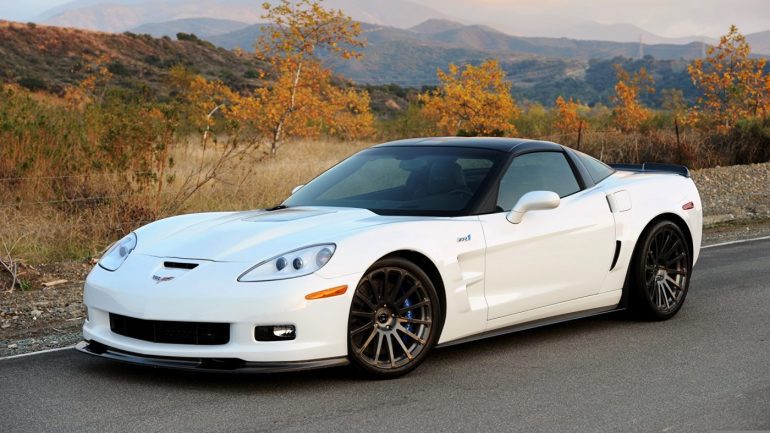
Corvette (C6) Basics
Production: Jun 2005–Feb 2013
Model Years: 2005-2013
Designer: Tom Peters
Body: 2-door coupe/conv/targa
Layout: Front-engine, RWD
Engine: 6.0 LS2 V8
Engine: 6.2 LS3 V8
Engine: 7.0 LS7 V8
Engine: 6.2 L V8 (Supercharged)
Trans: 4-speed auto
Trans: 6-speed manual (T56)
Trans: 6-speed auto (for ZR1)
Did You Know
It was the first Corvette since 1962 without pop-up headlights. The C6 generation reintroduced fixed headlights to the Corvette. This design shift streamlined the car's appearance and was a significant departure from the iconic pop-up headlights.
Special Variants
2008 Corvette Competition
2009 Corvette GT1 Champ.
2006 Corvette Z06
2005 Callaway C16 Corvette
2005 Callaway C17 Corvette
2008 Hertz Corvette ZHZ
2008 Corvette 427 Limited
2009 Corvette Z06 GT1 Champ
2009 Competition Sport Z06
2009 Competition Sport
2008 Corvette C6 GT4
2005 Corvette C6-R
2007 Victory Edition Corvette
2012 Corvette Centennial
2012 Callaway 25th Anniversary
2011 Corvette Z06 Carbon
2009 Corvette C6.R GT2
2011 Corvette Z06 Ron Fellows
2006 Corvette GT3 C6 Z06-R
2013 Corvette 427 60th Anniv.
2010 Corvette Grand Sport
2007 Corvette Z06 Ron Fellows
2009 C6 Corvette ZR1
2010 Corvette Jake Edition
Several Pace Cars & Replicas
More Resources
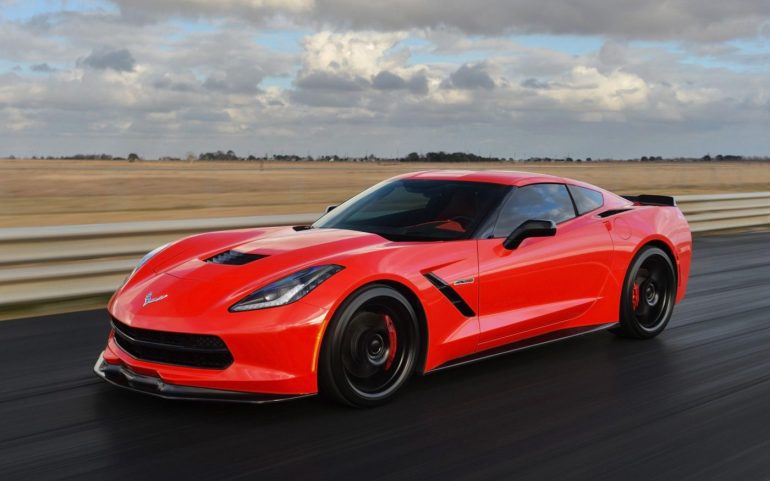
Corvette (C7) Basics
Production: Sep 2013–Nov 2019
Model Years: 2014-2019
Designer: Hwasup Lee
Body: 2-door targa/convert.
Layout: Front-engine, RWD
Engine: 6.2 L LT1 V8
Engine: 6.2 L LT4 V8 (Supercharged)
Engine: 6.2 L LT5 V8 (Supercharged)
Engine: 5.4 L Small-block V8
Trans: 7-speed manual
Trans: 6-speed auto (2014)
Trans: 8-speed auto
Did You Know
The Z06 was a track monster with a unique feature. To combat extreme track temperatures, the Z06 model came with an optional clear "wickerbill" – a small extension at the edge of the rear spoiler. This increased downforce without adding much drag, significantly improving track performance.
Special Variants
2014 Callaway AeroWagen
2020 Callaway 25th Anniv.
2020 Callaway Z06 Champion
2014 Callaway Corvette
2019 Grand Sport Drivers
2015 Corvette Z06 Indy Pace
2019 Corvette Indy 500 Pace
2018 Corvette Indy 500 Pace
2013 Corvette Indy 500 Pace
2019 Yenko/SC Stage II
2014 Corvette Stingray C7.R
2019 Corvette ZR1 Guide
2017 Corvette Indy Pace Car
2018 Corvette Carbon 65
2017 Grand Sport Collectors
2017 Corvette Grand Sport
2014 Stingray Premiere
2016 Corvette Z06 C7.R Edition
2015 Corvette Z06
More Resources
C7 Corvette (2014-2019)
The Chevrolet Corvette C7, produced from 2014 to 2019, marked a significant milestone in the evolution of this iconic American sports car. With the C7, Chevrolet managed to blend more than 60 years of the Corvette's performance heritage with cutting-edge technology and design, resulting in a vehicle that not only honored its past but also set new benchmarks for the future. The C7 was a testament to the Corvette's enduring legacy, showcasing innovation, precision, and a driving experience that was both exhilarating and accessible.
Design and Aerodynamics
The C7 Corvette, also known as the Stingray, a name resurrected from the historic Corvette lineage, boasted a design that was both aggressive and functional. The car featured sharp, angular lines and advanced aerodynamics, including a vented hood, functional fender vents, and integrated rear spoiler, which combined to reduce lift and improve stability at high speeds. Its exterior was meticulously sculpted to enhance performance, channeling airflow to cool vital components and generate downforce.
The interior of the C7 was equally impressive, representing a significant leap forward in quality and design. It featured premium materials, sophisticated craftsmanship, and advanced technology, ensuring that the cabin was as driver-focused as it was comfortable. The cockpit was designed to encapsulate the driver, providing intuitive access to its controls, and fostering a connection with the vehicle that was both visceral and intuitive.
Power and Performance
Under the hood, the Corvette C7 featured the potent LT1 6.2-liter V8 engine, which initially delivered 455 horsepower and 460 lb-ft of torque, numbers that later slightly increased with available performance exhaust systems. This engine was a marvel of modern engineering, utilizing technologies like direct injection, variable valve timing, and Active Fuel Management to balance explosive power with efficiency.
The introduction of the Z06 and later the ZR1 variants took the C7's performance into the stratosphere. The Z06 featured a supercharged 6.2L engine, producing an astounding 650 horsepower and 650 lb-ft of torque, making it one of the most powerful production cars at the time. The ZR1, introduced in 2019, pushed the boundaries even further with a 755-horsepower supercharged engine, asserting itself as the fastest and most powerful production Corvette ever made.
Technological Innovations
The C7 Corvette was laden with advanced technology that enhanced its driveability, safety, and enjoyment. The Performance Data Recorder (PDR) allowed drivers to record their driving experiences, providing telemetry data that could be used to improve driving skills or simply relive a thrilling drive. Magnetic Ride Control, now in its third generation, provided real-time damping adjustments, adapting to the road and the driver's style to deliver optimal handling.
Moreover, the C7 introduced the Corvette to a new generation of drivers through its blend of user-friendly technology, such as the MyLink infotainment system, and advanced driver-assistance features, combining traditional Corvette performance with modern convenience and connectivity.
Legacy and Impact
The C7 Corvette solidified the model's reputation as a world-class sports car, capable of competing on equal footing with its more expensive European counterparts. It was a celebration of American engineering, a symbol of performance and innovation that stayed true to the Corvette's heritage while boldly embracing the future.
As the last front-engine Corvette, the C7 holds a special place in the history of the model. It represents the pinnacle of decades of development, a fitting send-off to the traditional Corvette layout before the transition to the mid-engine C8. The C7 Corvette stands as a powerful testament to Chevrolet's commitment to pushing the boundaries of what an American sports car can be, combining breathtaking performance, advanced technology, and a design that is both beautiful and purposeful. It remains a beacon of automotive excellence, embodying the passion, innovation, and driving enjoyment that has defined the Corvette legacy for over six decades.
C8 Corvette (2020-Present)
The introduction of the eighth-generation Chevrolet Corvette, known as the C8, marked a revolutionary chapter in the storied history of this iconic American sports car. Unveiled in 2019 for the 2020 model year, the C8 Corvette shifted from the traditional front-engine layout to a groundbreaking mid-engine design, a transformation that redefined what the Corvette stood for, blending American muscle with exotic supercar engineering.
Embracing the Mid-Engine Marvel
The most significant change in the C8 Corvette is its mid-engine layout, a concept that had been teased and dreamt about by Corvette engineers and enthusiasts for decades. This shift was not merely about following a trend; it was about unlocking a new level of performance, balance, and driver engagement. The mid-engine design provides superior weight distribution, improved traction, and a lower center of gravity, which translates to breathtaking acceleration, sharper handling, and a more connected driving experience.
Design and Aerodynamics
The exterior of the C8 is a bold reimagining of the Corvette's aesthetic, combining classic cues with a futuristic vision. Its aggressive stance, sculpted lines, and aerodynamic efficiency reflect its performance capabilities, while the striking LED lighting and large air intakes meld function with style. The transformation also brings a new level of exotic presence, often drawing comparisons to European supercars, yet the C8 retains unmistakable Corvette DNA with its long hood, sculpted sides, and distinctive rear.
Inside, the C8's cockpit is a testament to driver-focused engineering. The cabin is replete with premium materials, advanced technology, and meticulous craftsmanship. The driver-centric layout, with its wraparound console and high-tech, customizable instrument cluster, ensures that control and comfort are at the forefront, whether cruising highways or dominating racetracks.
Power and Performance
At the heart of the C8 Corvette is the 6.2-liter LT2 V8 engine, an evolution of Chevrolet's small-block V8 lineage, producing an impressive 490 horsepower and 470 lb-ft of torque in its base form. When equipped with the Z51 Performance Package, these numbers are slightly higher, and the car is capable of achieving 0-60 mph in under 3 seconds, a figure that was once the exclusive domain of far more expensive supercars.
The introduction of the first-ever mid-engine Corvette Z06 in 2023 further pushed the boundaries, featuring a naturally aspirated 5.5-liter V8 engine that screams up to an 8600 rpm redline, delivering 670 horsepower and embodying the spirit of Corvette racing heritage.
Technological Innovations
The C8 is replete with cutting-edge technology that enhances its driveability, safety, and entertainment. The next-generation infotainment system, digital instrument cluster, and Head-Up Display provide a seamless and intuitive interface, while advanced driver aids support both daily driving and performance endeavors. The Magnetic Ride Control 4.0, available Performance Traction Management, and launch control system ensure that the Corvette's immense power is always accessible and controllable.
Redefining American Sports Cars
The Chevrolet Corvette C8 has not just evolved; it has revolutionized the legacy of one of America's most iconic sports cars. It challenges the conventions of what an American sports car can be, combining world-class performance, groundbreaking design, and advanced technology to create a truly extraordinary driving experience. This Corvette not only competes with the best the world has to offer but stands out as a unique proposition: a mid-engine supercar with the heart and soul of an American legend.
The C8 generation has proven that innovation, vision, and a commitment to performance can break new ground in automotive design. It represents a bold new era for Corvette, pushing the boundaries of possibility and redefining the American sports car for the 21st century.
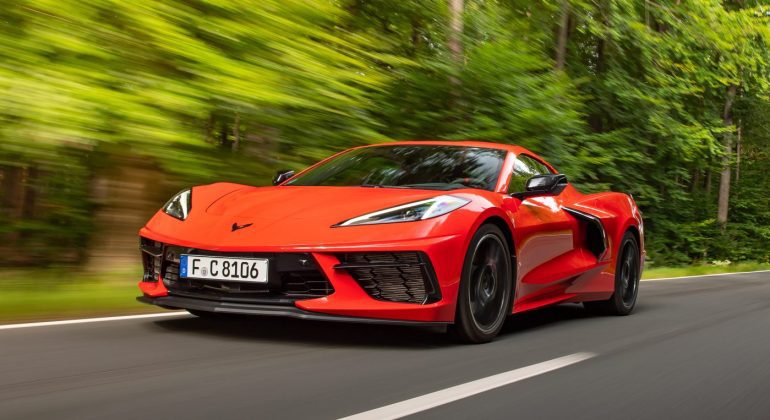
Corvette (C8) Basics
Production: Feb 2020 - Present
Model Years: 2020-Present
Designer: Tom Peters
Body: 2-door coupe/convert.
Layout: Mid-engine, RWD
Layout: Mid-engine, AWD (E-Ray)
Engine: 6.2 L LT2 V8
Engine: 5.5 L LT6 V8 (Flat-Plane)
Engine: 6.2 L LT2 V8 + Electric Motor
Trans: 8-speed dual-clutch
Did You Know
It's the first mid-engine Corvette in history. The C8 revolutionized the Corvette design by moving the engine behind the driver instead of its traditional front-engine placement. This dramatically improves weight distribution, handling, and offers a completely new driving experience for Corvette fans.
Special Variants
2023 C8 Corvette Z06
2024 Corvette Z06 GT3.R
2022 Corvette Stingray IMSA
2023 Corvette 70th Anniv.
2022 Corvette Indy Pace Car
2023 Corvette Z06 70th Anniv.
2021 Corvette Indy Pace Car
2020 Corvette Indy Pace Car
2020 Corvette C8.R
2024 Corvette E-Ray
More Resources

Chevrolet Corvette Model List
A full list of every Corvette model and variant ever made
1953 C1 Chevrolet Corvette
1954 C1 Chevrolet Corvette
1955 C1 Chevrolet Corvette
1956 C1 Chevrolet Corvette
1957 C1 Chevrolet Corvette
1958 C1 Chevrolet Corvette
1959 C1 Chevrolet Corvette
1960 C1 Chevrolet Corvette
1961 C1 Chevrolet Corvette
1962 C1 Chevrolet Corvette
1963 C2 Chevrolet Corvette
1963 C2 Chevrolet Corvette Sting Ray Z06
1964 C2 Chevrolet Corvette
1964 C2 Chevrolet Corvette XP-819 Rear Engine
1965 C2 Chevrolet Corvette
1966 C2 Chevrolet Corvette
1967 C2 Chevrolet Corvette
1967 C2 Chevrolet Corvette Sting Ray L88
1968 C3 Chevrolet Corvette
1968 C3 Chevrolet Corvette Sting Ray L88
1969 C3 Chevrolet Corvette
1969 C3 Chevrolet Corvette Mid-Engine XP-882
1969 C3 Chevrolet Corvette Sting Ray L88
1969 C3 Chevrolet Corvette ZL-1
1970 C3 Chevrolet Corvette
1970 C3 Chevrolet Corvette ZR1
1971 C3 Chevrolet Corvette
1971 C3 Chevrolet Corvette ZR1
1972 C3 Chevrolet Corvette
1972 C3 Chevrolet Corvette Reynolds XP-895
1972 C3 Chevrolet Corvette Two Rotor XP-897 GT
1972 C3 Chevrolet Corvette ZR1
1973 C3 Chevrolet Corvette
1973 C3 Chevrolet Corvette Four Rotor XP-882
1974 C3 Chevrolet Corvette
1975 C3 Chevrolet Corvette
1976 C3 Chevrolet Corvette
1977 C3 Chevrolet Corvette
1978 C3 Chevrolet Corvette
1978 C3 Corvette Indy 500 Pace Car
1979 C3 Chevrolet Corvette
1980 C3 Chevrolet Corvette
1981 C3 Chevrolet Corvette
1982 C3 Chevrolet Corvette
1984 C4 Chevrolet Corvette
1985 C4 Chevrolet Corvette
1986 C4 Chevrolet Corvette
1986 C4 Chevrolet Corvette Indy Concept
1986 C4 Corvette Indy 500 Pace Car
1987 C4 Chevrolet Corvette
1988 C4 Chevrolet Corvette
1988 C4 Chevrolet Corvette 35th Anniversary
1989 C4 Chevrolet Corvette
1990 C4 Chevrolet Corvette
1990 C4 Chevrolet Corvette CERV III Concept
1991 C4 Chevrolet Corvette
1992 C4 Chevrolet Corvette
1993 C4 Chevrolet Corvette
1994 C4 Chevrolet Corvette
1995 C4 Chevrolet Corvette
1995 C4 Corvette Indy 500 Pace Car
1996 C4 Chevrolet Corvette
1997 C5 Chevrolet Corvette
1998 C5 Chevrolet Corvette
1998 C5 Callaway C12 Corvette
1998 C5 Corvette Indy 500 Pace Car
1999 C5 Chevrolet Corvette
1999 C5 Callaway C12 Corvette
2000 C5 Chevrolet Corvette
2001 C5 Chevrolet Corvette
2001 C5 Callaway C12-R Corvette
2002 C5 Chevrolet Corvette
2002 C5 Corvette Indy 500 Pace Car
2003 C5 Chevrolet Corvette
2004 C5 Chevrolet Corvette
2004 C5 Corvette Indy 500 Pace Car
2005 C6 Chevrolet Corvette
2005 C6 Corvette Indy 500 Pace Car
2006 C6 Chevrolet Corvette
2006 C6 Corvette Z06 Indy 500 Pace Car
2007 C6 Chevrolet Corvette
2007 C6 Chevrolet Corvette Z06 Ron Fellows
2007 C6 Corvette Convertible Indy 500 Pace Car
2008 C6 Chevrolet Corvette
2008 Chevrolet Corvette Victory Edition
2008 Corvette Z06 Indy 500 Pace Car
2009 C6 Chevrolet Corvette
2009 Chevrolet Corvette ZR1
2009 SV9 Competizione
2010 C6 Chevrolet Corvette
2010 C6 Chevrolet Corvette ZR1
2011 C6 Chevrolet Corvette
2011 C6 Chevrolet Corvette ZR1
2012 C6 Chevrolet Corvette
2012 C6 Chevrolet Corvette Centennial Edition
2012 C6 Chevrolet Corvette ZR1
2013 C6 Chevrolet Corvette
2013 C6 Chevrolet Corvette 427 60th Anniv
2013 C6 Chevrolet Corvette ZR1
2013 C6 Corvette ZR1 Indy 500 Pace Car
2014 C7 Chevrolet Corvette
2014 C7 Chevrolet Corvette Stingray C7.R
2014 C7 Corvette Indy 500 Pace Car
2015 C7 Chevrolet Corvette
2015 C7 Chevrolet Corvette Stingray C7.R
2015 C7 Chevrolet Corvette Z06
2015 C7 Chevrolet Corvette Z06 Convertible
2015 C7 Corvette Z06 Indy 500 Pace Car
2016 C7 Chevrolet Corvette
2016 C7 Chevrolet Corvette Stingray C7.R
2016 C7 Chevrolet Corvette Z06
2016 C7 Chevrolet Corvette Z06 Convertible
2016 C7 Corvette Z06 C7.R Edition
2017 C7 Chevrolet Corvette
2017 C7 Chevrolet Corvette Z06
2017 C7 Chevrolet Corvette Z06 Convertible
2017 C7 Corvette Grand Sport Indy 500 Pace Car
2017 C7 Grand Sport (Z15)
2017 C7 Grand Sport Collectors Edition (Z25)
2018 C7 Chevrolet Corvette
2018 C7 Chevrolet Corvette Carbon 65
2018 C7 Chevrolet Corvette Z06
2018 C7 Chevrolet Corvette Z06 Convertible
2018 C7 Corvette ZR1 Indy 500 Pace Car
2018 C7 Grand Sport (Z15)
2019 C7 Chevrolet Corvette
2019 C7 Chevrolet Corvette Z06
2019 C7 Chevrolet Corvette Z06 Convertible
2019 C7 Chevrolet Corvette ZR1
2019 C7 Corvette Grand Sport Indy 500 Pace Car
2020 C8 Corvette Stingray
2021 C8 Corvette Stingray
2022 C8 Corvette IMSA GTLM Championship Edition
2023 C8 Corvette Z06
2024 C8 Corvette E-Ray
"You don't own a Corvette, the Corvette owns you."
Scott Kolecki



